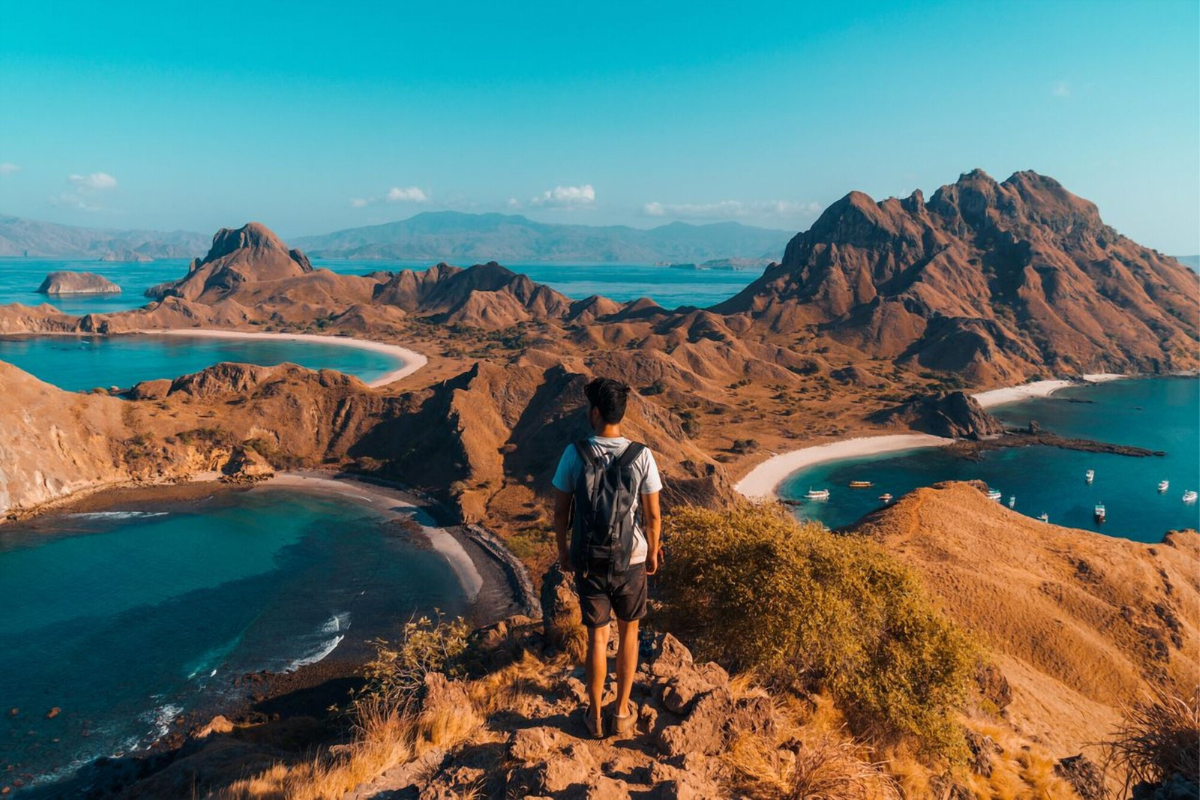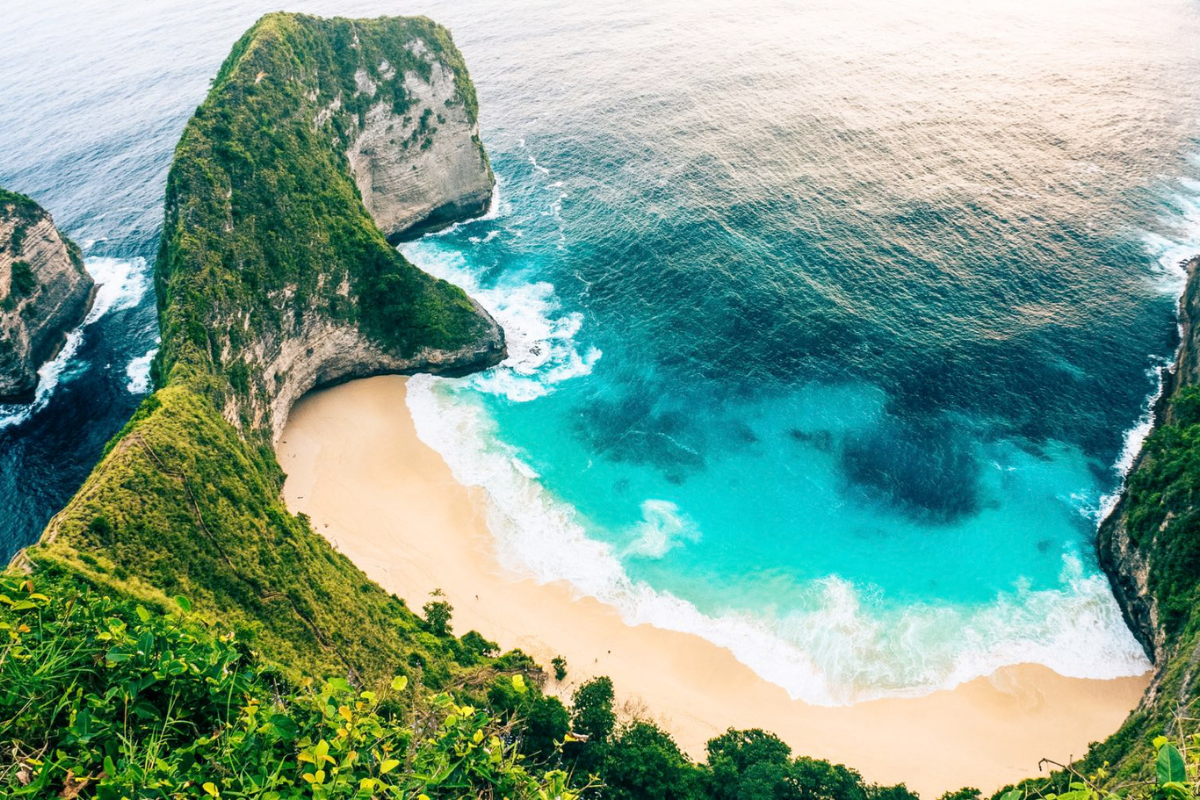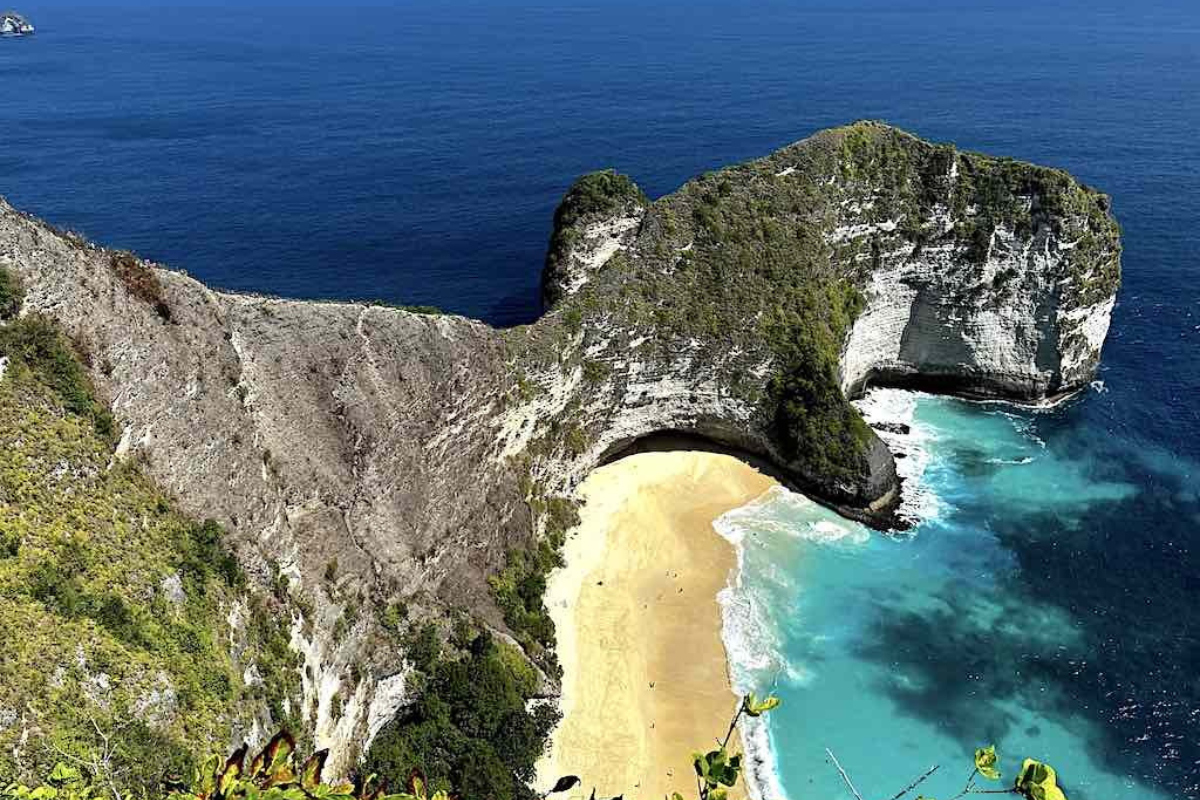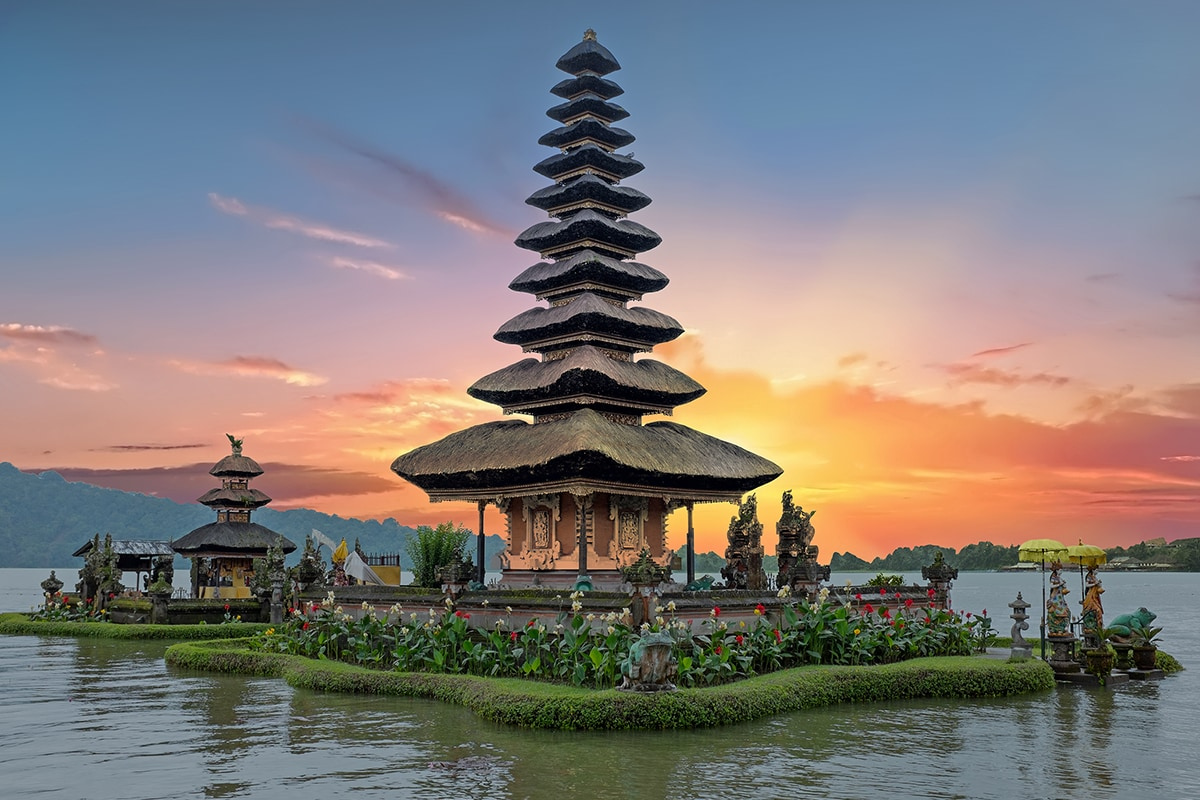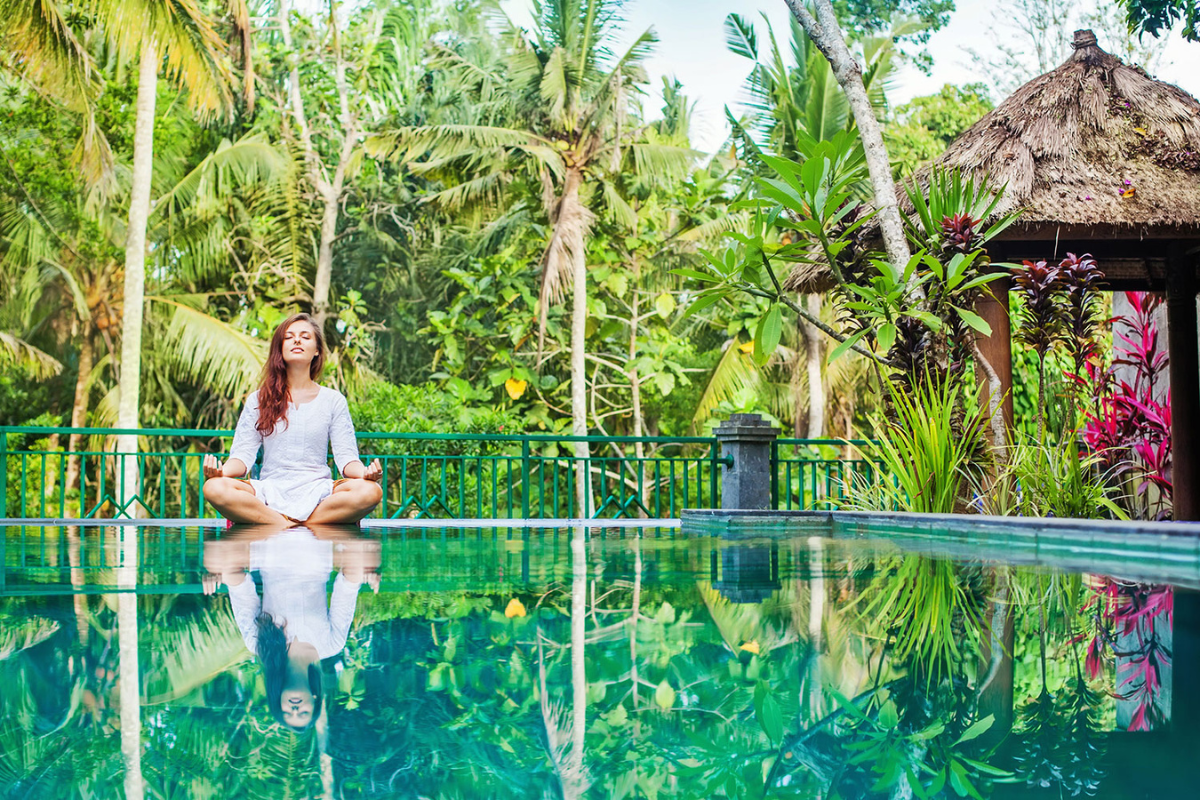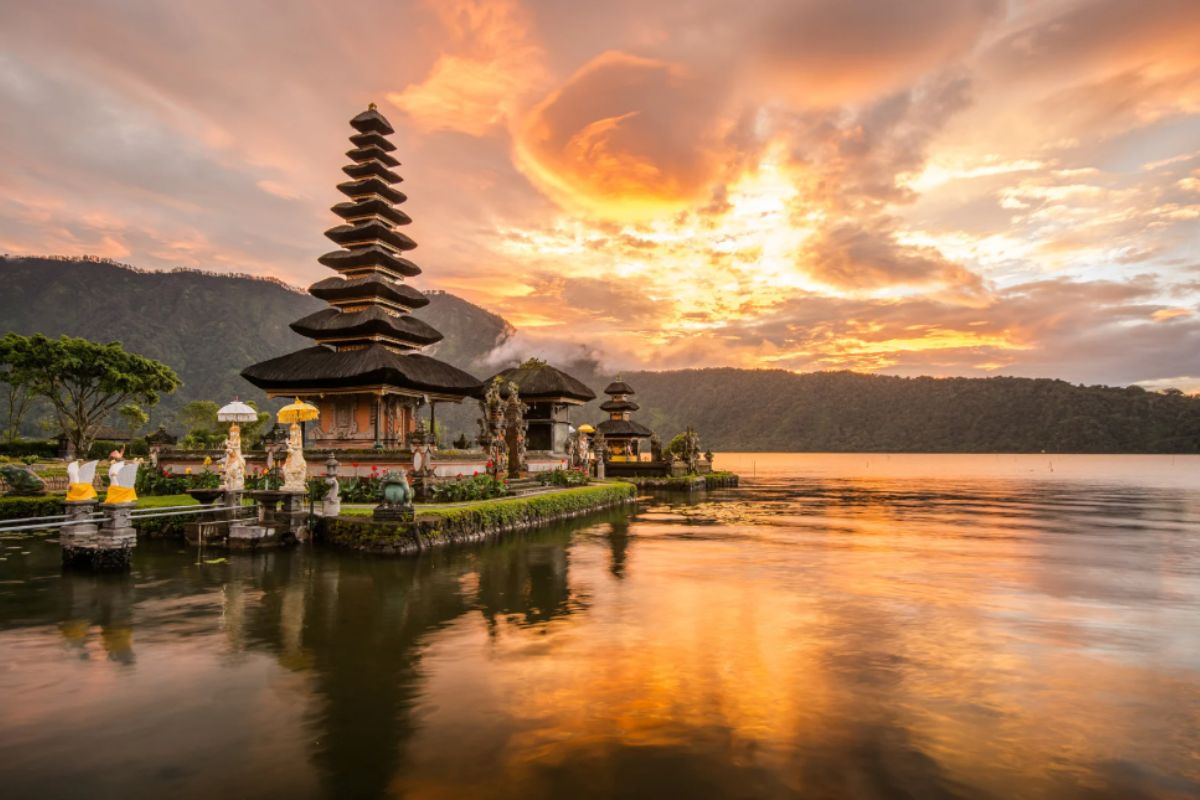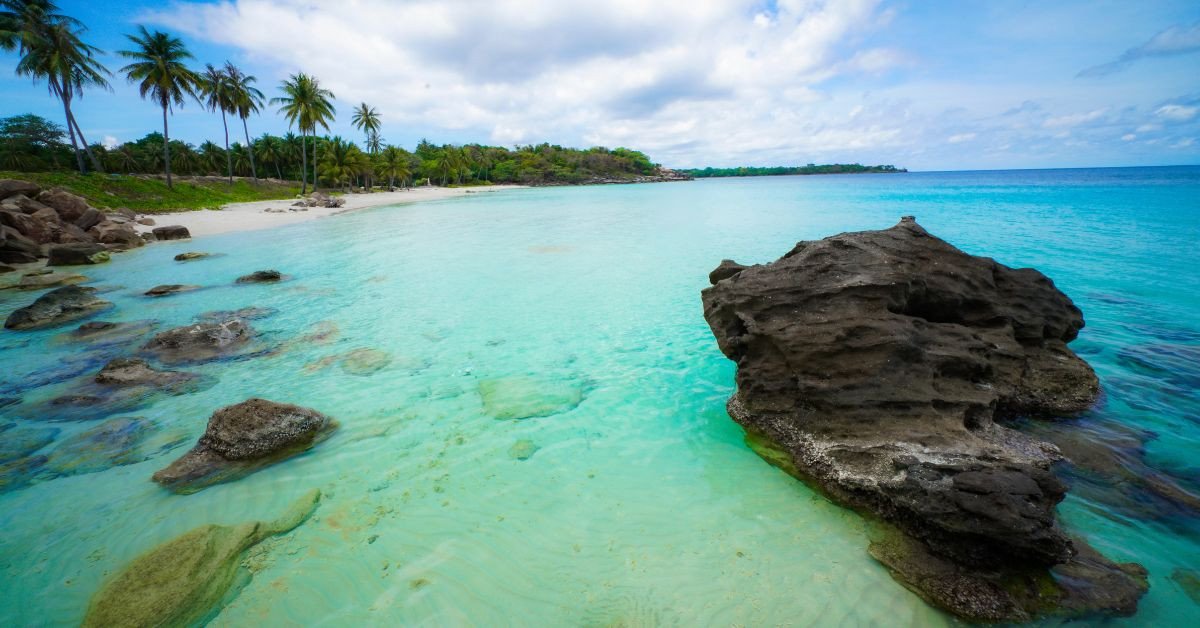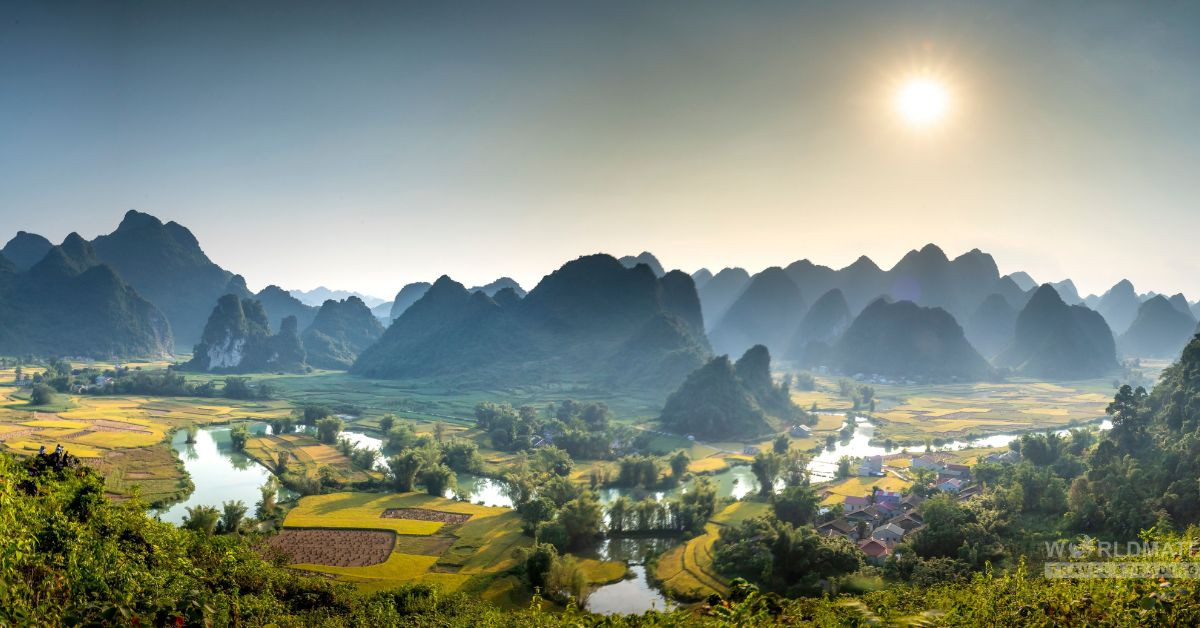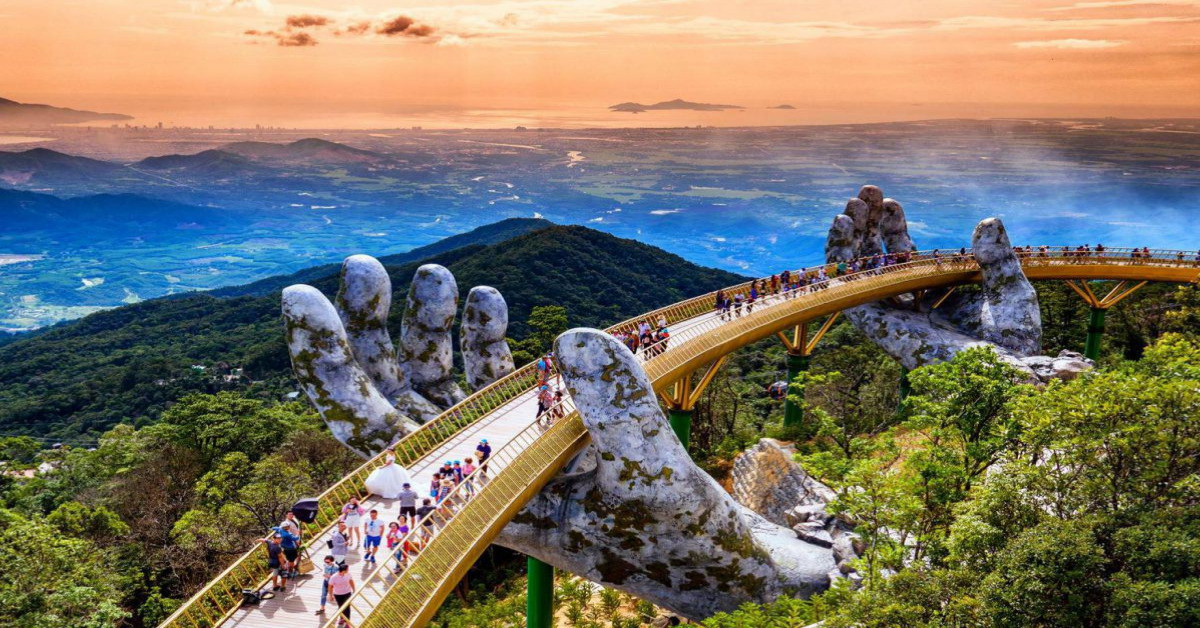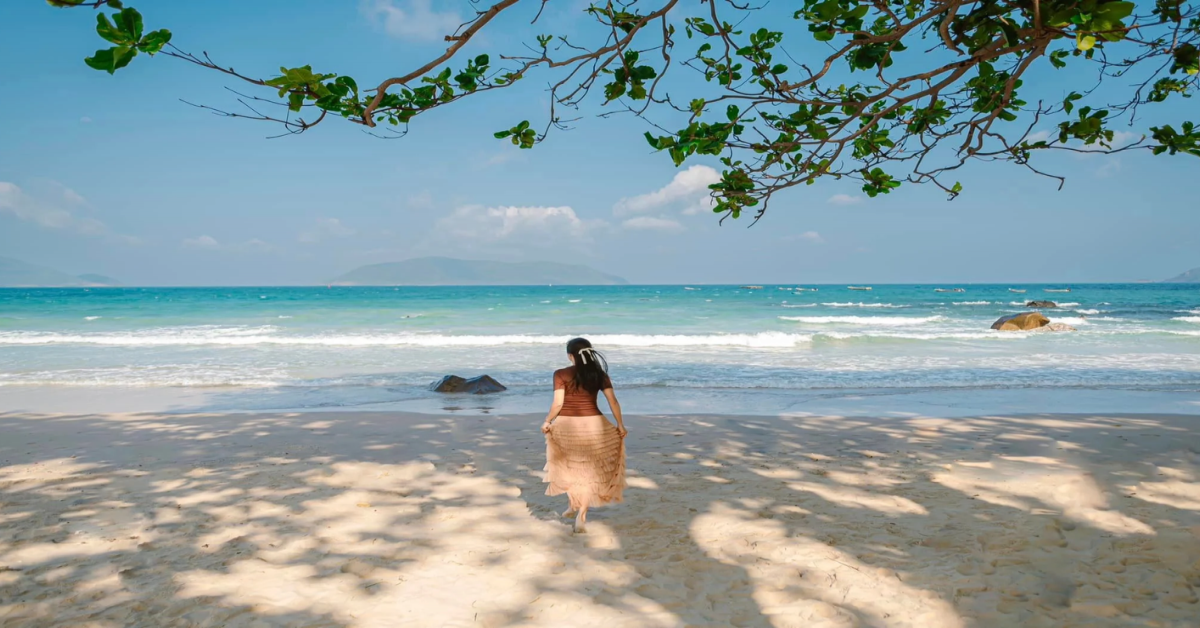Discover Indonesia's Natural and Cultural Treasures: A Photographer's Paradise
Indonesia, the world's largest archipelago, is a captivating tapestry of natural wonders and rich cultural heritage that beckons explorers and photographers alike. With its pristine islands, soft white beaches, towering volcanoes, and lush rainforests, this Southeast Asian gem offers endless opportunities for outdoor adventure and stunning visual captures.
Beyond its breathtaking natural landscapes, Indonesia's ancient history is equally enchanting, with a wealth of temples, ruins, and palaces that stand as testaments to the country's cultural legacy. From the iconic Candi Borobudur Temple Complex to the unique traditions of Tana Toraja, every corner of Indonesia promises a magical and immersive experience for the curious traveler.
Whether you're drawn to the serene shores of Lake Toba in Sumatra, the vibrant marine life of Bunaken, or the dramatic volcanic vistas of Mount Bromo in East Java, the photography possibilities in Indonesia are truly vast and captivating. Capture the pastel hues of the Pink Beach on Komodo Island, the thundering Gitgit Waterfall in Bali, and the tri-colored lakes of Kelimutu Volcano on Flores Island – each scene a testament to the country's unparalleled natural beauty.
Embark on an unforgettable journey through Indonesia's diverse landscapes and rich cultural tapestry, where every moment is an opportunity to uncover the magic and wonder that makes this archipelago a true photographer's paradise.
1. Jomblang Cave: Exploring the Mystical Underworld of Yogyakarta
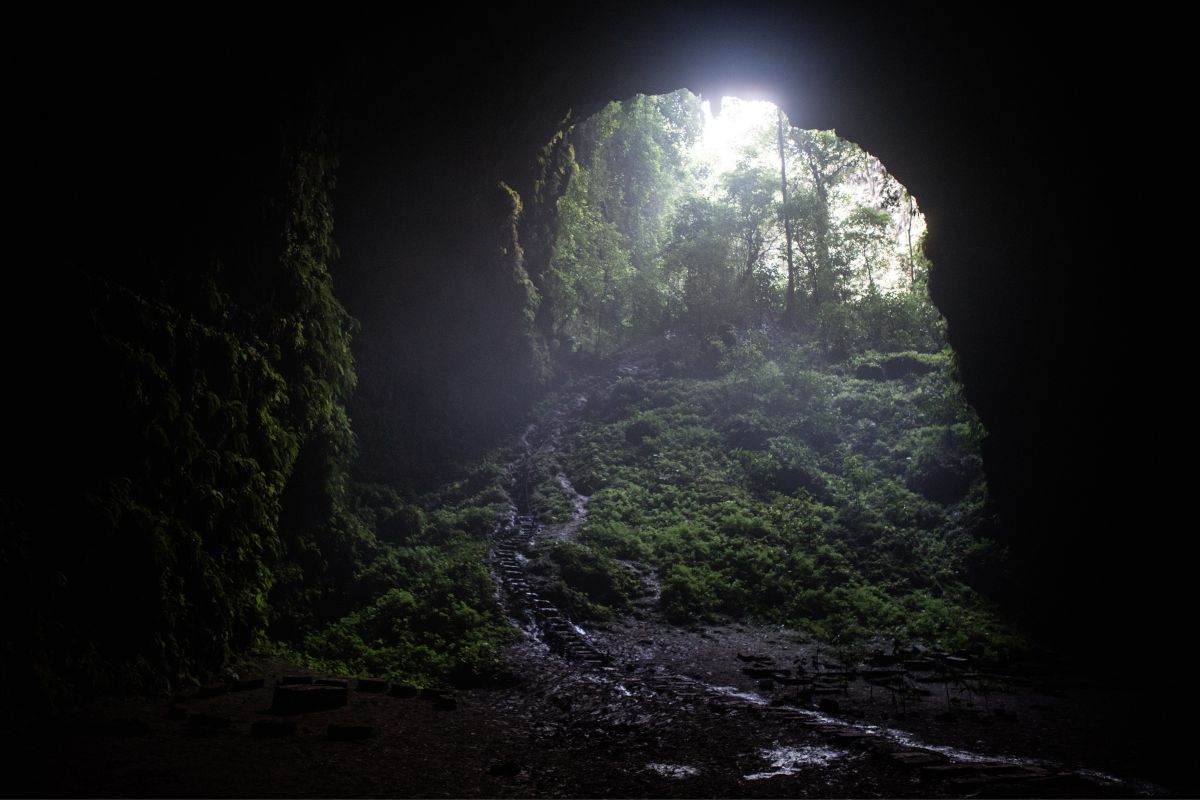
Jomblang Cave
Nestled amidst the lush hills of Yogyakarta, Indonesia lies the breathtaking natural wonder known as Jomblang Cave. This remarkable cave system is a true hidden gem, offering visitors a unique and captivating adventure deep underground.
Descending 60 meters (200 feet) through a natural sinkhole, visitors are greeted by a stunning sight: the "Heaven's Light" phenomenon. As sunlight filters through the cave's opening, it illuminates the verdant vegetation and creates an ethereal, almost divine atmosphere within the vast cavern.
Wandering through the cavernous chamber, one is struck by the sheer scale and grandeur of Jomblang Cave. The towering limestone walls, carved by centuries of natural erosion, create a truly awe-inspiring setting. Explore the intricate network of tunnels and chambers, marveling at the geological formations that have been shaped over millennia.
Beyond the main Jomblang Cave lies the equally impressive Grubug Cave, connected by an underground passageway. This secondary cave system is known for its dramatic light beams, which dance across the cavern walls, creating a mesmerizing display of nature's power.
Throughout the journey, visitors will have the opportunity to learn about the cultural and historical significance of these caves from knowledgeable guides. The Jomblang Cave complex has long been revered by the local Javanese people, who believe it to be a sacred and mystical place.
This once-in-a-lifetime experience offers a chance to venture deep into the heart of the earth, where time seems to stand still and the beauty of the natural world is on full display. Whether you're an avid explorer or simply seeking a unique adventure, a visit to Jomblang Cave is sure to leave a lasting impression.
2. Discovering the Wonders of Raja Ampat: An Unparalleled Island Adventure
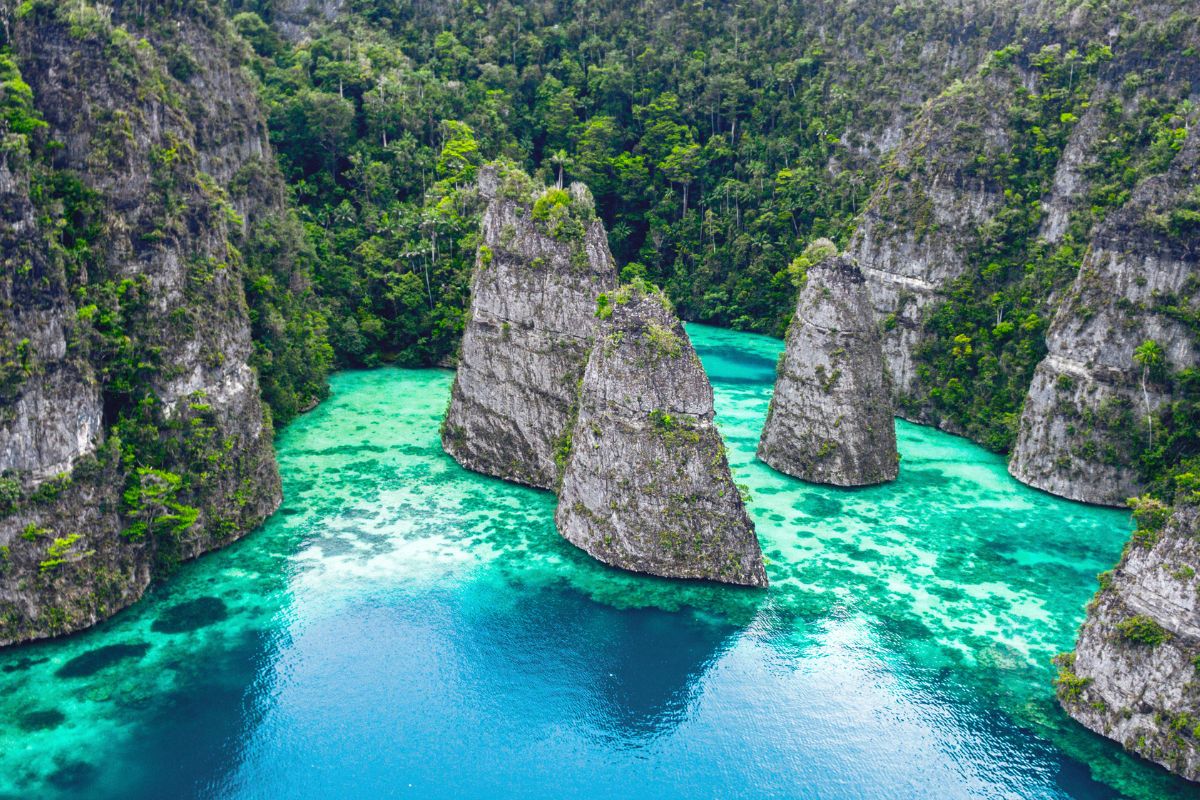
Wonders of Raja Ampat
Nestled in the heart of the Coral Triangle, the Raja Ampat Islands are a true natural paradise that beckons adventurous travelers from around the world. This remote archipelago, located off the coast of West Papua, Indonesia, is a veritable treasure trove of biodiversity, offering an unparalleled experience for those seeking to immerse themselves in the breathtaking beauty of the underwater world.
Comprised of over 1,500 small islands, cays, and shoals, Raja Ampat is renowned for its staggering marine life diversity, boasting more than 1,700 species of fish and over 600 types of coral - the highest recorded in the world. From the vibrant, kaleidoscopic coral reefs teeming with schools of tropical fish to the serene, turquoise lagoons and hidden coves, the sheer abundance of life in these waters is truly humbling.
Above the surface, the landscape is equally captivating, with lush, jungle-clad islands dotted with towering limestone cliffs and pristine, white-sand beaches. Hiking through the interior, visitors can catch glimpses of the region's unique wildlife, including the iconic bird-of-paradise and the elusive tree kangaroo.
One of the true highlights of a visit to Raja Ampat is the opportunity to explore the region's intricate network of waterways by boat. Gliding through the crystal-clear waters, travelers can discover hidden sea caves, paddle around scenic inlets, and visit traditional fishing villages, gaining a deep appreciation for the local culture and way of life.
Whether you're an avid scuba diver, a passionate snorkeler, or simply someone seeking a profound connection with nature, Raja Ampat promises an unforgettable adventure. Witness the vibrant ecosystem that thrives beneath the waves, hike through lush, untouched forests, and immerse yourself in the timeless serenity of this truly remarkable corner of the world.
Embark on a journey to the Raja Ampat Islands and unlock the secrets of one of the most biodiverse regions on the planet – a true natural wonder that will leave a lasting impression on your heart and soul.
3. Lake Toba, Sumatra: A Serene Volcanic Oasis
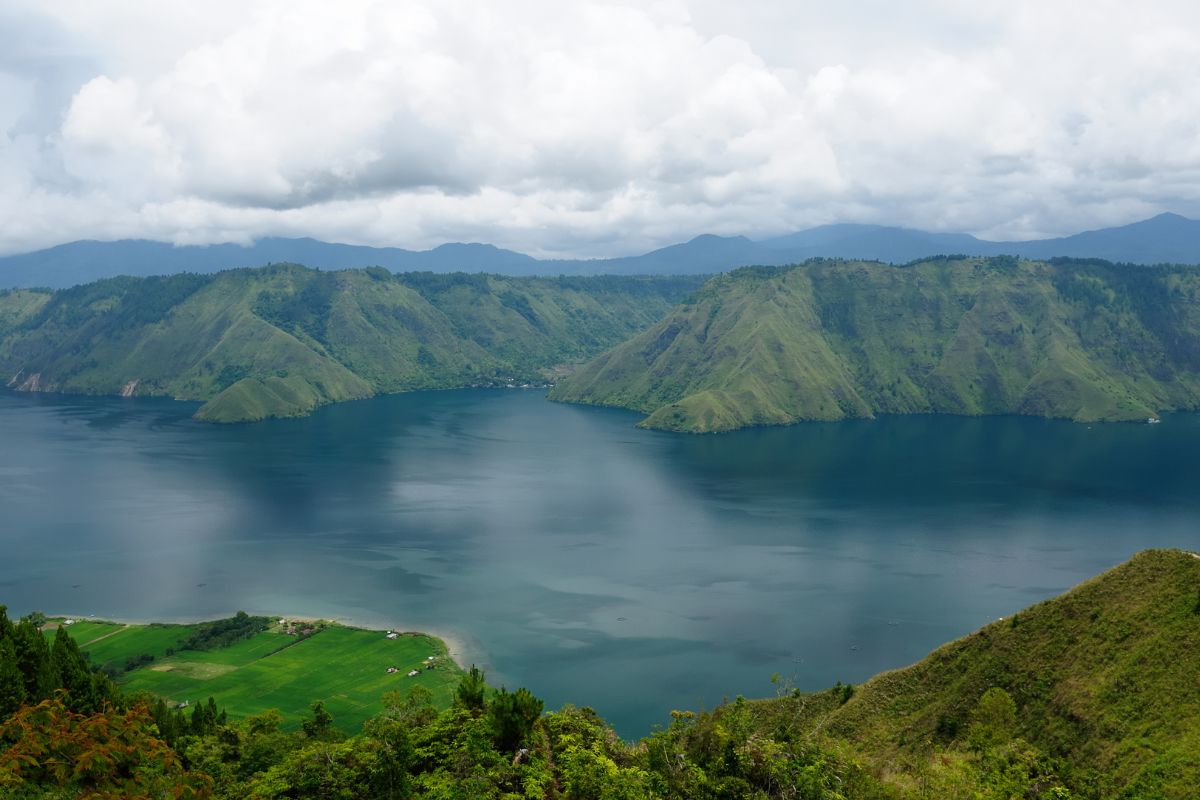
Lake Toba, Sumatra
Nestled in the heart of Sumatra, Indonesia, Lake Toba is a breathtaking natural wonder that captivates all who visit. Formed by a massive volcanic eruption thousands of years ago, this serene body of water is the largest volcanic lake in the world, spanning an impressive 100 km in length and 30 km in width.
Surrounded by towering cliffs and dotted with the lush, verdant Samosir Island, Lake Toba offers a peaceful respite from the bustle of everyday life. Visitors can enjoy a variety of activities, from tranquil boat rides across the glistening waters to hiking through the island's lush landscapes, immersing themselves in the unique culture and traditions of the local Batak people.
With its awe-inspiring natural beauty, rich history, and captivating cultural heritage, Lake Toba remains a true gem of Sumatra, a serene volcanic oasis that enchants all who are fortunate enough to experience its magic.
4. Exploring the Dramatic Landscapes of Mount Bromo in East Java
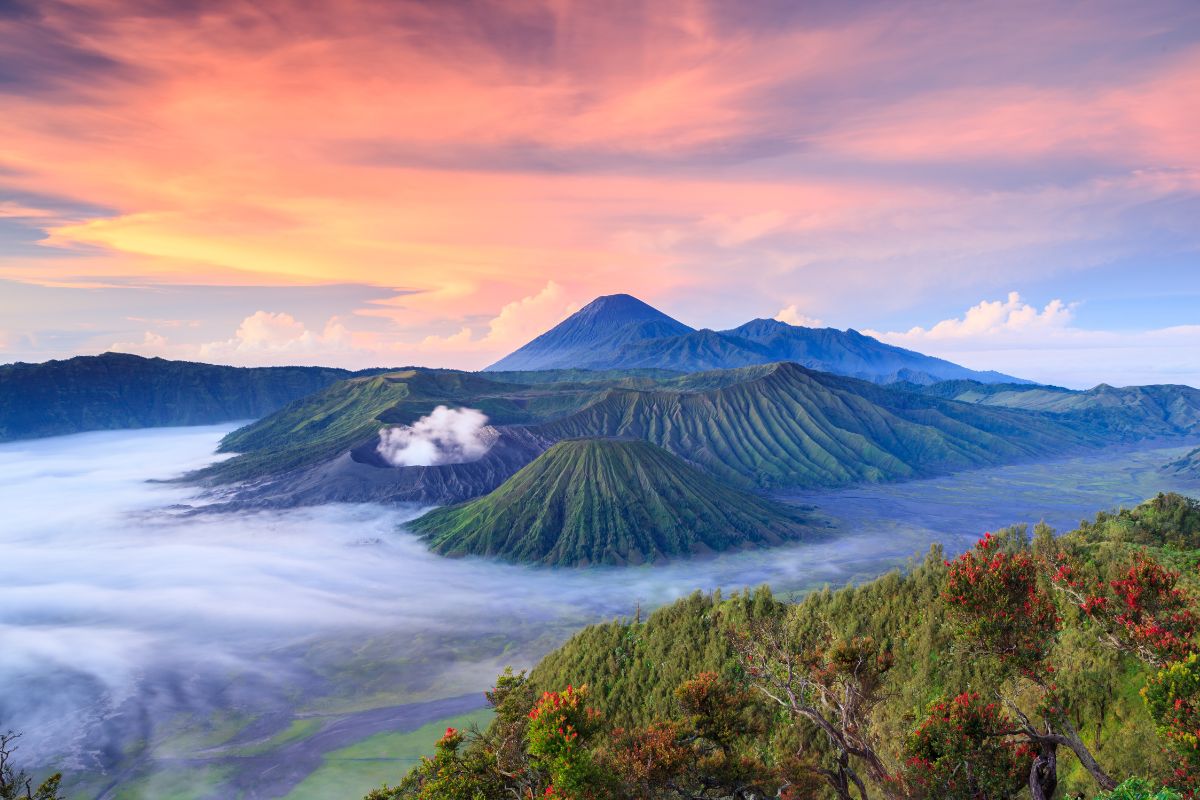
Mount Bromo in East Java
Towering majestically against the backdrop of the Tengger Caldera, Mount Bromo is a true natural wonder that has captivated the hearts and minds of visitors to East Java, Indonesia. This iconic volcano, with its stark, lunar-like landscapes and billowing plumes of smoke, is a must-see destination for anyone seeking to immerse themselves in the raw power and beauty of the natural world.
Ascending to the edge of the Tengger Caldera, travelers are greeted by a truly awe-inspiring sight – the imposing, blackened cone of Mount Bromo, rising from a vast, rolling sea of volcanic sand. The journey to reach this vantage point is an exhilarating one, with options to hike, ride a horse, or take a 4x4 vehicle over the undulating terrain.
As the sun rises over the horizon, casting a warm glow across the otherworldly landscape, the true magic of Mount Bromo becomes evident. Witness the plumes of smoke and steam erupting from the volcano's crater, a powerful reminder of the dynamic geological forces that continue to shape this remarkable region.
Beyond the volcano itself, the Tengger Caldera offers a wealth of natural wonders to explore. Hike through the sweeping, golden sand sea, marvel at the stunning volcanic cones and craters that dot the landscape, and take in the breathtaking panoramic views that stretch out to the horizon.
For the adventurous traveler, the opportunity to venture into the crater of Mount Bromo is a true highlight. Carefully navigating the steep, rocky trails, visitors can peer into the active volcanic vent, observing the simmering sulfurous gases and feeling the raw power of the earth beneath their feet.
Throughout the experience, visitors will have the chance to learn about the rich cultural and spiritual significance of Mount Bromo, which holds a revered place in the traditions of the local Tengger people. From the legendary tales of the volcano's formation to the annual Yadnya Kasada festival, where offerings are made to the mountain's deities, this natural wonder is deeply woven into the fabric of East Javanese heritage.
Whether you're seeking a thrill-seeking adventure or a deeper connection with the natural world, a visit to Mount Bromo is sure to leave a lasting impression. Immerse yourself in the dramatic landscapes, witness the power of an active volcano, and discover the unique cultural traditions that make this destination truly remarkable.
5. Discovering the Enchanting Pink Sands of Komodo Island
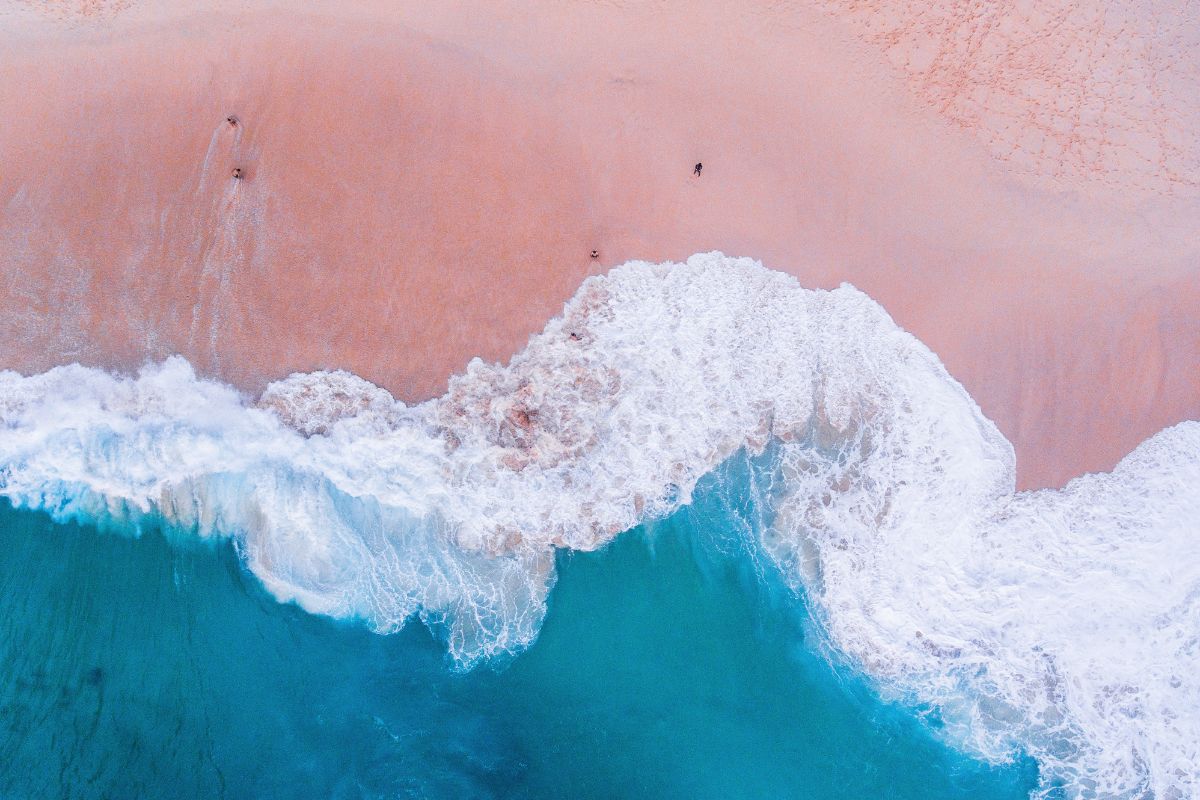
Pink Sands of Komodo Island
Nestled amidst the stunning archipelago of Komodo National Park, the Pink Beach of Komodo Island is a true natural marvel that captivates visitors from around the world. This unique and breathtaking stretch of shoreline is renowned for its distinctive, salmon-hued sand, a product of the island's volcanic origins and the abundant presence of Foraminifera, a type of tiny marine organism.
Accessing the Pink Beach requires a boat journey through the turquoise waters of the Flores Sea, offering travelers a glimpse of the serene and untouched landscapes that define Komodo National Park. As the boat approaches the shoreline, the first glimpse of the vibrant, rose-colored sand is a truly awe-inspiring sight, setting the stage for an unforgettable experience.
Once on the beach, visitors can immerse themselves in the serene and tranquil atmosphere, taking in the breathtaking vistas of the surrounding islands, the crystal-clear waters, and the remarkable natural formations that dot the coastline. The fine, powdery sand is a delight to walk upon, and the gentle lapping of the waves creates a soothing, almost meditative ambiance.
Beyond the beach itself, the greater Komodo National Park is a treasure trove of natural wonders, offering visitors the opportunity to encounter the legendary Komodo dragon, the world's largest lizard, in its natural habitat. Guided hikes through the rugged, volcanic landscapes provide a chance to spot a variety of unique flora and fauna, including the endemic Timor deer and the elusive Komodo monitor.
For those seeking to fully immerse themselves in the underwater world, the Pink Beach is an ideal launch point for snorkeling and scuba diving expeditions. Explore the vibrant coral reefs, teeming with a kaleidoscope of tropical fish, and keep an eye out for the park's iconic marine life, including manta rays, sea turtles, and the enigmatic dugong.
The Pink Beach of Komodo Island is a true natural marvel, a place where the raw power of the earth's geology has created a breathtaking and unique landscape that captivates all who visit. Whether you're seeking a serene, secluded retreat or an adventure-filled exploration of one of Indonesia's most biodiverse regions, a journey to this enchanting destination is sure to leave a lasting impression.
6. Exploring the Mystical Wonders of the Dieng Plateau in Central Java
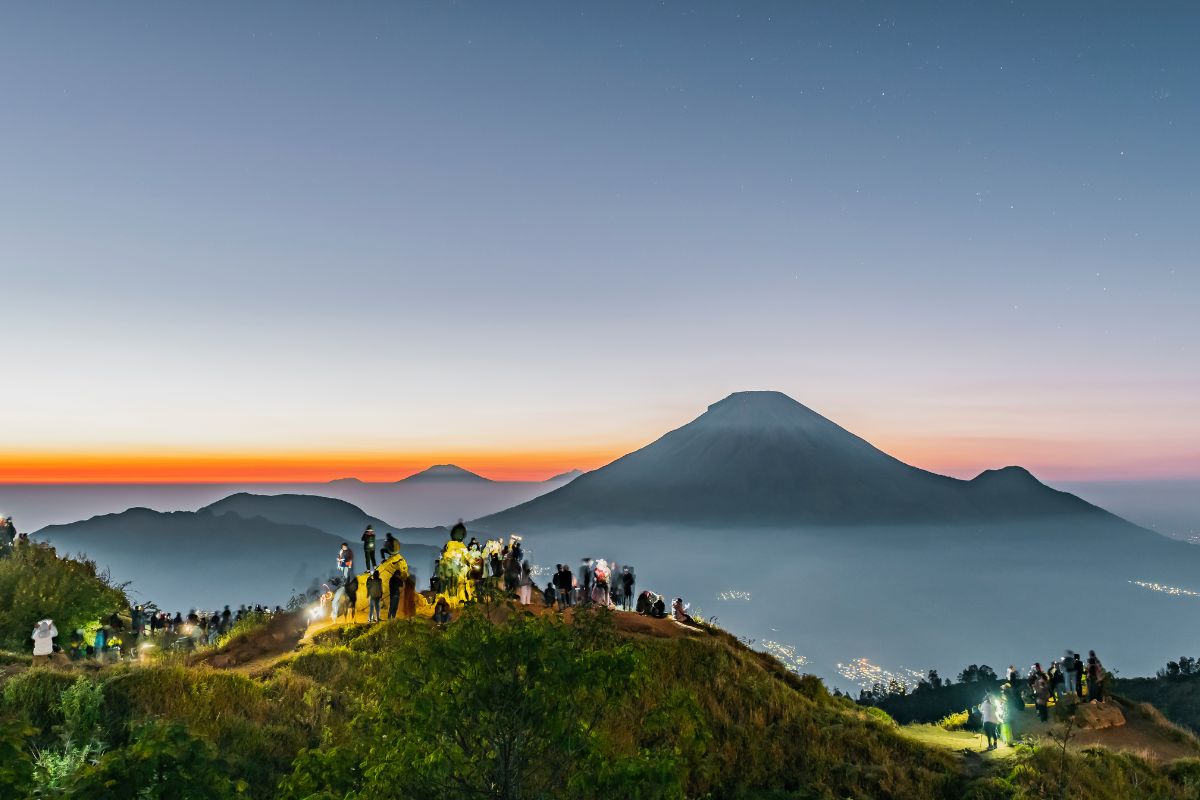
Dieng Plateau in Central Java
Tucked away in the heart of Central Java, the Dieng Plateau is a captivating and otherworldly destination that has long captured the imagination of visitors to Indonesia. This high-altitude region, perched at an elevation of over 2,000 meters above sea level, is a mosaic of volcanic landscapes, ancient Hindu temples, and a rich cultural heritage that has endured for centuries.
The Dieng Plateau is known for its striking volcanic features, including the iconic Dieng Volcanic Complex, a group of over 20 small volcanoes that dot the landscape. Visitors can explore the area's many craters, lakes, and fumaroles, marveling at the vibrant hues of the sulfur-rich soils and the plumes of steam that rise from the earth's interior.
One of the most iconic sights in the Dieng Plateau is the Telaga Warna, a series of multicolored lakes that change hue depending on the mineral content and the angle of the sunlight. These natural wonders, coupled with the surrounding volcanic peaks, create a truly otherworldly and enchanting atmosphere that captivates all who witness it.
Beyond the natural landscapes, the Dieng Plateau is also renowned for its rich cultural heritage, with numerous ancient Hindu temples and archaeological sites scattered throughout the region. The Dieng Temple Complex, a collection of well-preserved 8th-century Hindu shrines, is a particular highlight, offering visitors a glimpse into the region's long and storied past.
Exploring the Dieng Plateau is not just a visual feast, but also a journey of discovery and enlightenment. The local Dieng people have a deep connection to the land, and visitors can immerse themselves in their traditions, customs, and beliefs, learning about the spiritual significance of the region's natural features and the legends that have been passed down through generations.
Whether you're drawn to the dramatic volcanic landscapes, the ancient cultural sites, or the opportunity to connect with the region's vibrant local communities, the Dieng Plateau is a destination that promises to captivate and inspire. Embark on a journey to this mystical corner of Central Java and unlock the secrets of one of Indonesia's most remarkable natural and cultural wonders.
7. Discovering the Enchanting Crystal Bay in the Nusa Islands
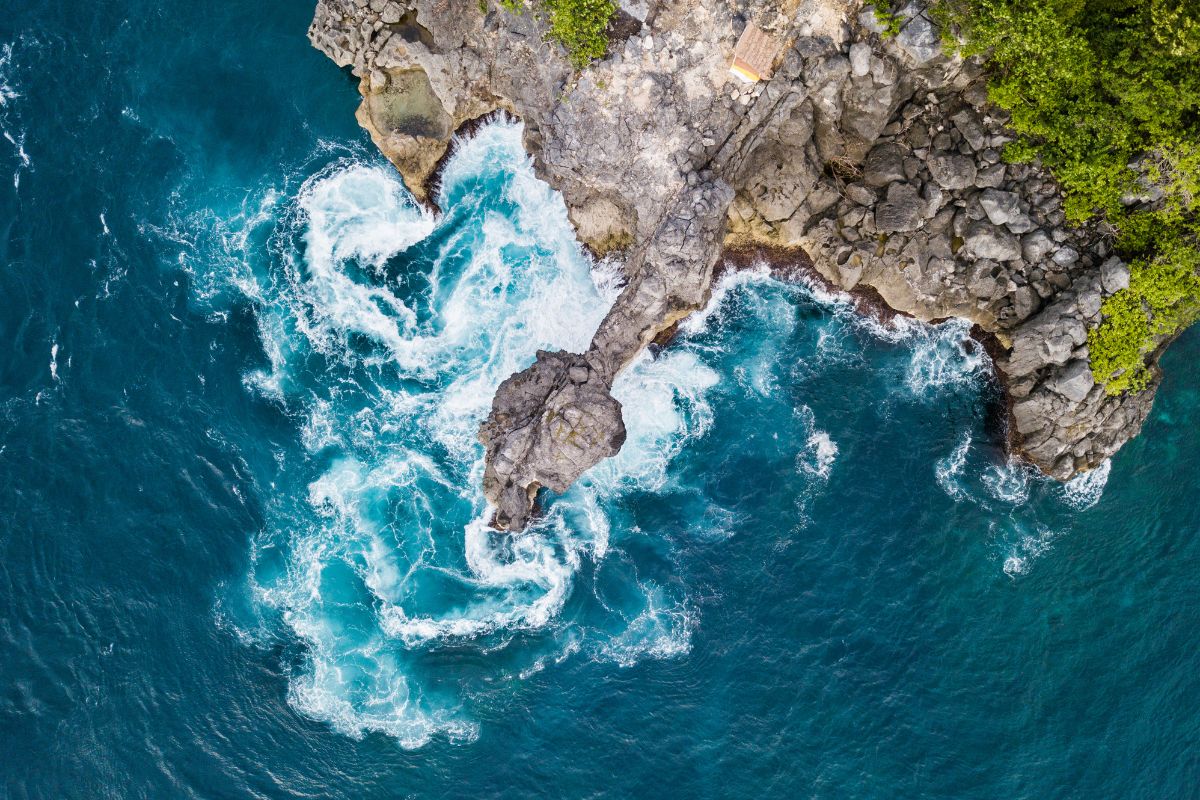
Enchanting Crystal Bay in the Nusa Islands
Nestled amidst the stunning archipelago known as the Nusa Islands, Crystal Bay is a true gem that has captivated the hearts of travelers from around the world. This idyllic cove, located on the island of Nusa Penida, is renowned for its crystal-clear turquoise waters, pristine white-sand beaches, and breathtaking natural landscapes that seem to transport visitors to a realm of pure, unbridled beauty.
Accessible only by boat, the journey to Crystal Bay is an adventure in itself, with the opportunity to marvel at the dramatic cliffs, lush tropical foliage, and the sparkling sea that surrounds the Nusa Islands. As the boat approaches the secluded bay, the first glimpse of the glistening waters and the powdery white sand is a true feast for the senses.
Once on shore, visitors can immerse themselves in the serene and tranquil atmosphere of Crystal Bay, taking a leisurely stroll along the pristine beach, dipping their toes in the refreshing waters, or simply soaking in the stunning vistas that surround them. The bay's sheltered location and calm waters make it an ideal spot for swimming, snorkeling, and even stand-up paddleboarding, allowing visitors to explore the vibrant underwater ecosystems that thrive in this protected marine environment.
Beyond the crystal-clear waters and the idyllic beach, Crystal Bay is also a hub for wildlife enthusiasts and nature lovers. The surrounding cliffs and forests are home to a diverse array of endemic flora and fauna, including the iconic Bali starling, one of the rarest birds in the world. Guided hikes and excursions offer the opportunity to spot these elusive creatures, as well as a chance to explore the rugged, dramatic landscapes that define the Nusa Islands.
For those seeking a more cultural experience, Crystal Bay serves as a gateway to the rich heritage and traditions of the Nusa Islands. Visitors can explore the nearby villages, learning about the local way of life, and witnessing the enduring spiritual practices that are deeply woven into the fabric of this island paradise.
Whether you're seeking a serene escape, a natural adventure, or a deeper connection with the local culture, Crystal Bay in the Nusa Islands promises to enchant and captivate all who visit. Immerse yourself in the breathtaking beauty of this remarkable destination and discover the true essence of Indonesia's island paradise.
8. Unveiling the Mesmerizing Kelimutu Volcano on Flores Island
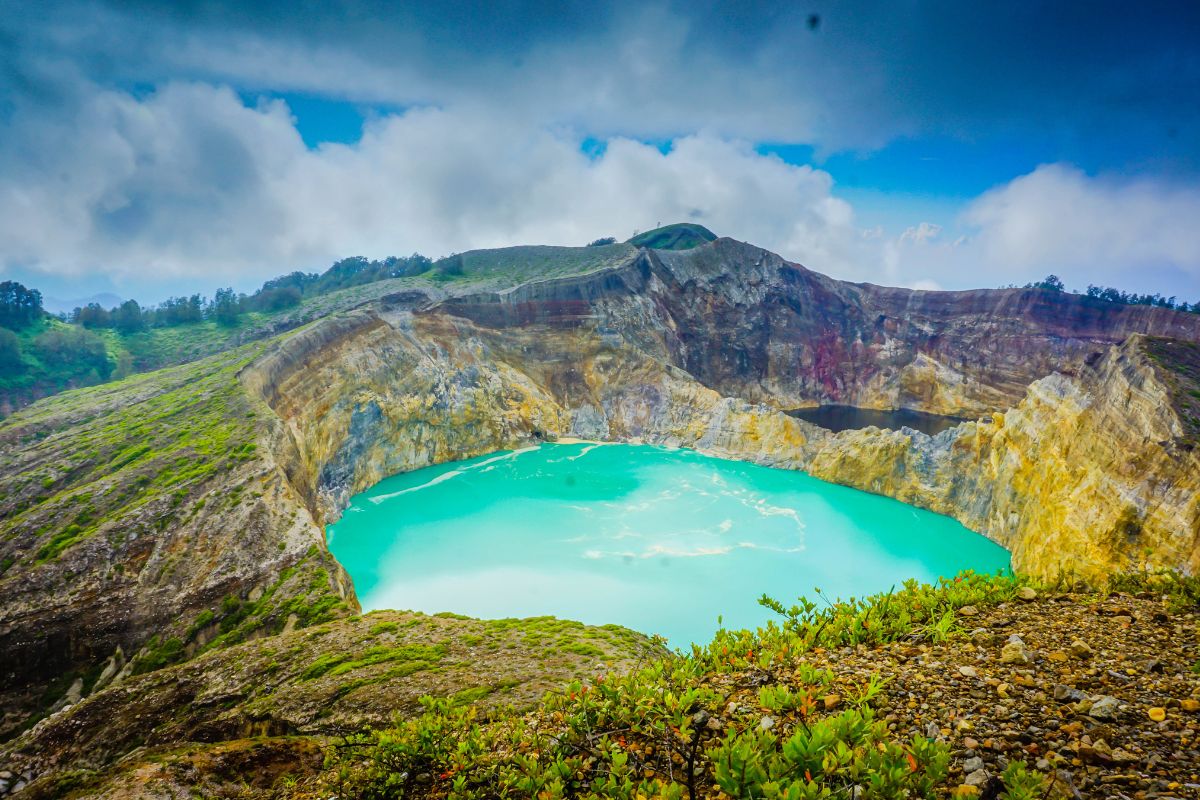
Kelimutu Volcano on Flores Island
Nestled in the heart of Flores Island, the Kelimutu Volcano is a natural wonder that has long captivated the imaginations of travelers and scientists alike. This iconic three-crater lake, each with its own distinct and ever-changing hue, is a testament to the dynamic and awe-inspiring power of the earth's geological processes.
Reaching an impressive height of 1,639 meters above sea level, Kelimutu Volcano is a popular destination for hikers and trekkers, who come to witness the breathtaking transformation of the crater lakes' colors. The three lakes – Tiwu Ata Mbupu (Lake of Old People), Tiwu Nuwa Muri Koo Fai (Lake of Young Men and Maidens), and Tiwu Ata Polo (Bewitched or Enchanted Lake) – each exhibit a unique and captivating palette, ranging from deep blue and green to vibrant red and brown.
The shifting colors of the Kelimutu Crater Lakes are the result of a complex interplay between volcanic activity, mineral content, and microbial life. As the volcanic activity within the mountain fluctuates, the chemical composition of the lakes changes, leading to the mesmerizing chromatic displays that have made Kelimutu a global attraction.
Exploring the Kelimutu Volcano and its crater lakes is a truly immersive experience, offering visitors the chance to witness the dramatic landscapes and the ever-changing natural phenomena that define this remarkable destination. Hiking to the rim of the volcano provides a panoramic view of the three lakes and the surrounding lush, forested slopes, while guided tours can reveal the rich cultural and spiritual significance of the site for the local Lio people.
Beyond the crater lakes, the Kelimutu Volcano and the greater Flores Island offer a wealth of natural and cultural treasures to discover. Visitors can explore the pristine beaches, rugged mountainous terrain, and the vibrant local communities that have called this island home for generations, creating a truly holistic and enriching travel experience.
Whether you're a nature enthusiast, a photographer, or simply someone in awe of the incredible power and beauty of our planet, a visit to the Kelimutu Volcano on Flores Island is a must-add to your Indonesian travel itinerary. Witness the mesmerizing and ever-changing colors of the crater lakes and unlock the secrets of this remarkable natural wonder.
9. Discovering the Enchanting Gitgit Waterfall in Bali
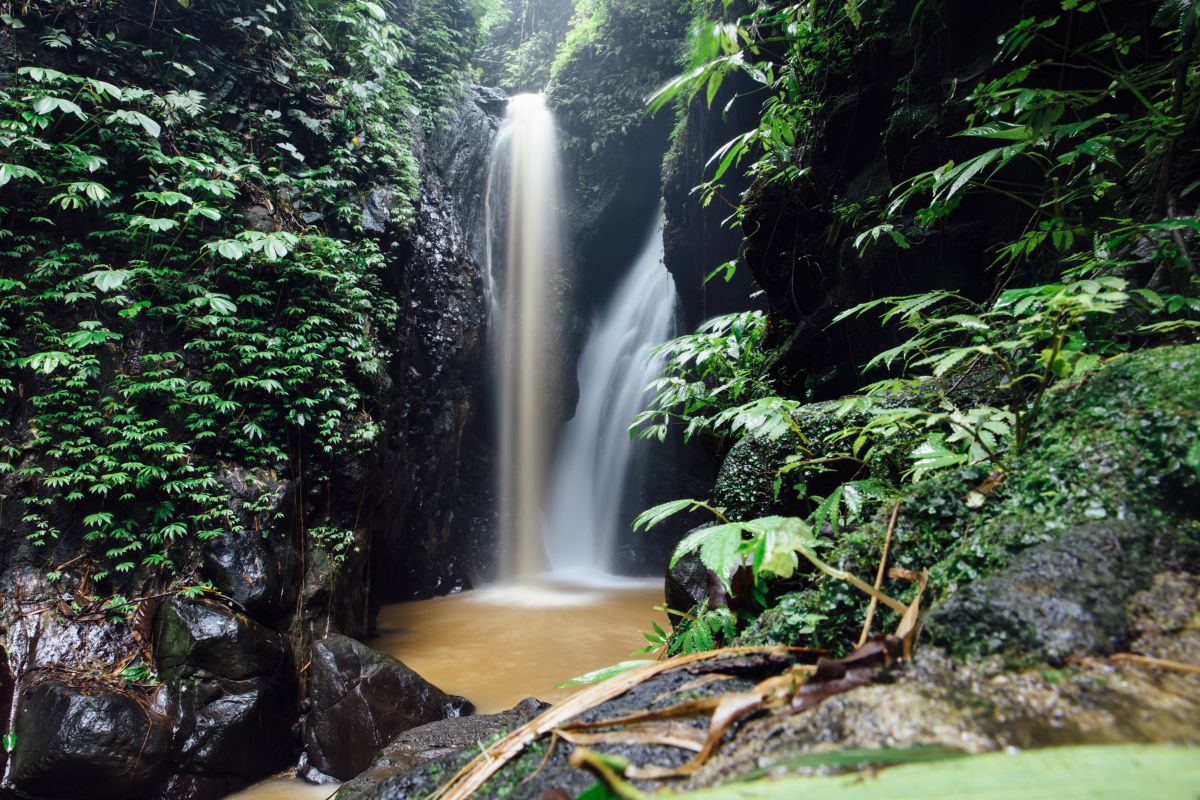
Gitgit Waterfall in Bali
Nestled amidst the lush, verdant landscapes of northern Bali, the Gitgit Waterfall is a true natural wonder that has long captivated the hearts of visitors to the island. This stunning, multi-tiered waterfall, cascading down from a height of approximately 40 meters, is a testament to the island's remarkable natural beauty and the sheer power of its flowing waters.
Accessible via a short hike through a picturesque bamboo forest, the Gitgit Waterfall is a popular destination for both adventurous travelers and those seeking a serene, rejuvenating escape from the bustle of Bali's more crowded tourist hubs. The trail leading to the waterfall is well-maintained and offers breathtaking vistas of the surrounding hills and valleys, setting the stage for an unforgettable experience.
As you approach the waterfall, the sound of the rushing water and the sight of the cascading flow are truly mesmerizing. The main waterfall feature is complemented by a series of smaller cascades and pools, each offering a unique perspective and the opportunity to interact with the natural environment. Visitors can take a refreshing dip in the cool, crystal-clear waters, or simply sit and bask in the tranquil ambiance, listening to the soothing sounds of the waterfall.
Beyond the waterfall itself, the Gitgit area is also home to a rich array of flora and fauna, making it a haven for nature enthusiasts and wildlife lovers. Hiking trails wind through the lush forests, offering the chance to spot a variety of endemic bird species, butterflies, and other native creatures that call this place home.
The Gitgit Waterfall is not only a natural wonder but also a hub of cultural significance for the local Balinese people. The site is believed to hold spiritual importance, and visitors may encounter traditional offerings or ceremonies taking place, providing a glimpse into the island's deeply rooted spiritual traditions.
Whether you're seeking a rejuvenating respite, a photogenic natural backdrop, or a deeper connection with Bali's natural and cultural heritage, the Gitgit Waterfall is a must-visit destination that will leave a lasting impression on all who experience its captivating beauty.
10. Exploring the Wonders of Tanjung Puting National Park in Central Kalimantan
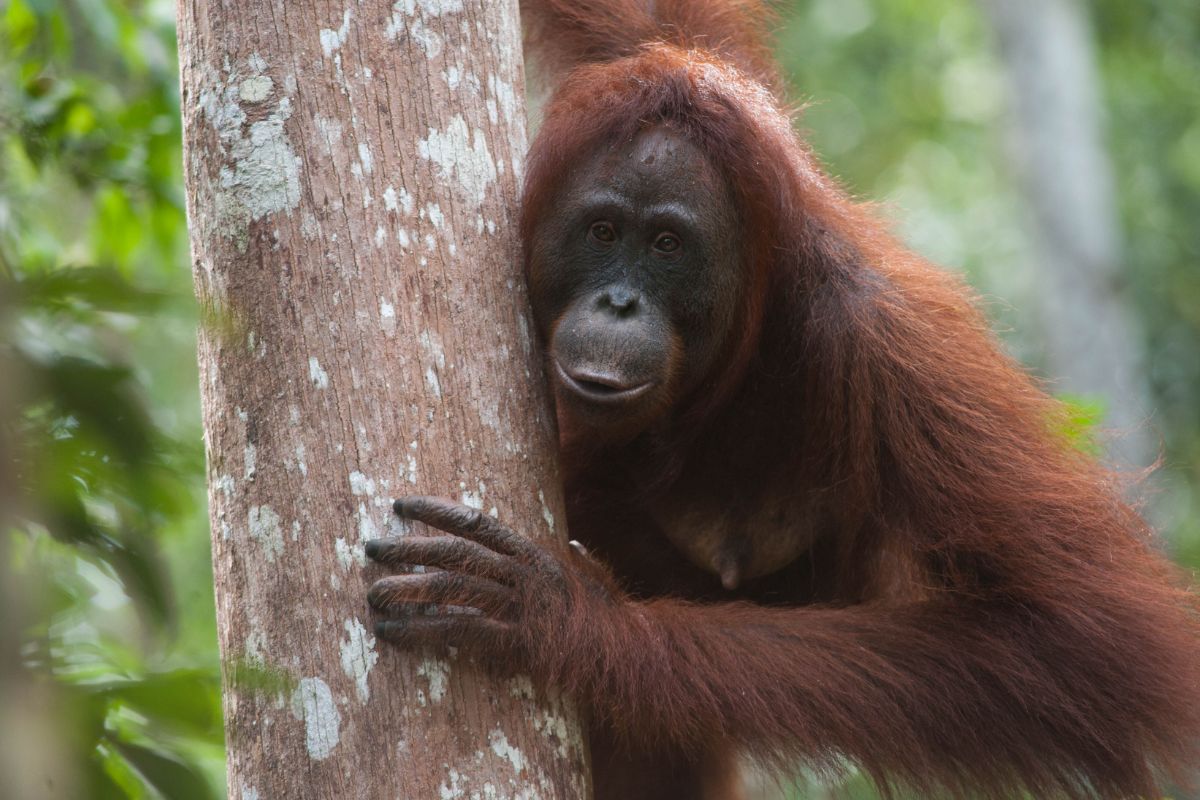
Tanjung Puting National Park in Central Kalimantan
Nestled in the heart of Indonesian Borneo, Tanjung Puting National Park is a true gem of the natural world, renowned for its rich biodiversity and its iconic population of wild orangutans. Spanning an impressive 415,040 hectares, this protected area is a testament to the remarkable resilience and beauty of the tropical rainforest ecosystem.
At the core of Tanjung Puting's appeal are the resident orangutan populations, which can be observed in their natural habitat through a network of carefully managed rehabilitation and release sites. Visitors have the opportunity to witness these incredible primates in their element, watching as they swing effortlessly through the canopy, forage for food, and interact with their families and peers.
Beyond the orangutans, Tanjung Puting is home to a dazzling array of other wildlife, including proboscis monkeys, long-tailed macaques, clouded leopards, and a diverse array of bird species. The park's diverse ecosystems, which range from lush, primary rainforests to swampy peatlands and riverine habitats, provide the perfect conditions for these species to thrive.
Exploration of Tanjung Puting often takes place via a network of rivers and waterways, with guided boat tours offering visitors a unique perspective on the park's landscapes and wildlife. These river journeys provide the opportunity to spot elusive creatures, observe the daily life of the local communities, and immerse oneself in the serene, tranquil atmosphere of the park.
In addition to its remarkable wildlife, Tanjung Puting is also significant from a cultural perspective, as it is home to the indigenous Dayak people. Visitors can learn about the Dayak's traditional way of life, their deep connection to the land, and their efforts to protect the fragile ecosystem that sustains them.
Tanjung Puting National Park is not only a natural wonder but also a critical conservation site, as it plays a vital role in the protection of the rapidly diminishing orangutan population. By visiting and supporting the park, travelers can contribute to the ongoing efforts to safeguard these incredible primates and their irreplaceable habitat.
Whether you're a nature enthusiast, a wildlife lover, or simply someone in awe of the remarkable diversity of our planet, a visit to Tanjung Puting National Park in Central Kalimantan is a must-do experience. Immerse yourself in the verdant rainforests, witness the awe-inspiring orangutans, and connect with the rich cultural heritage of this remarkable Indonesian destination.
11. Unveiling the Enchanting Beauty of Broken Beach in Bali
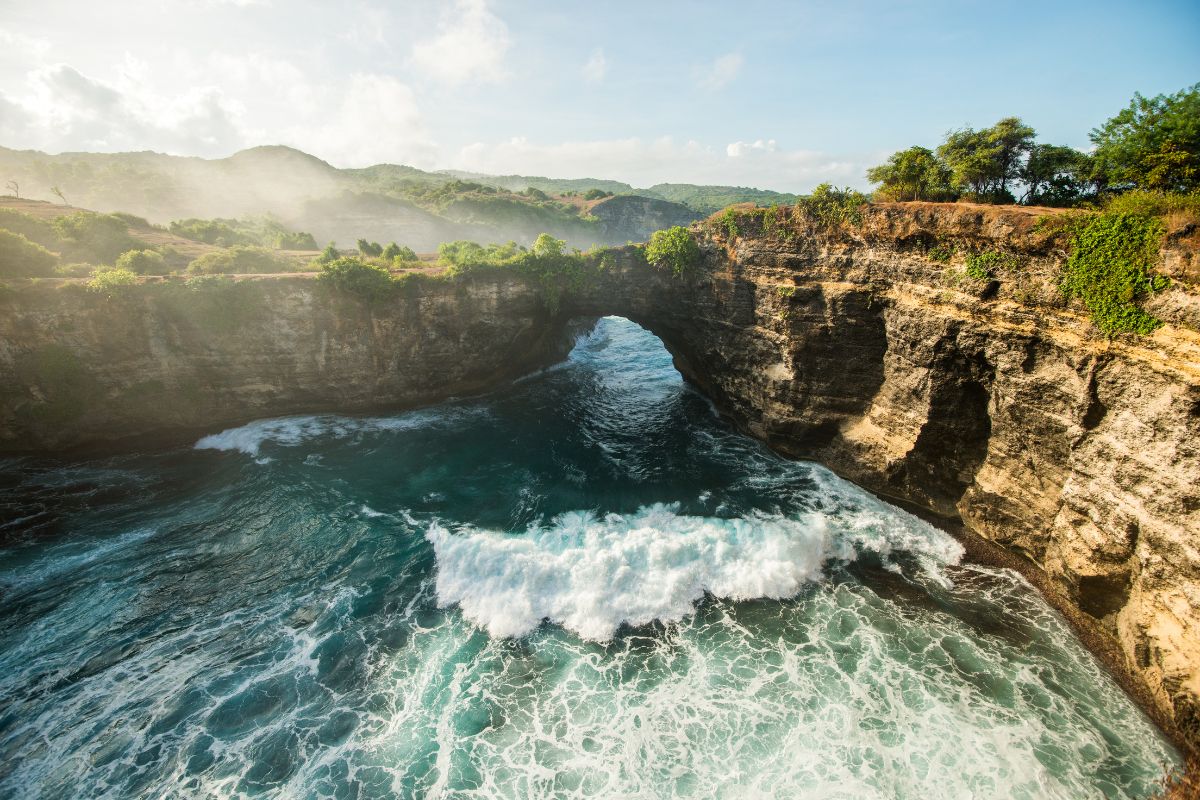
Broken Beach in Bali
Tucked away on the western coast of Bali, the natural wonder known as Broken Beach (or Pasih Uug in the local Balinese language) is a breathtaking geological marvel that has captivated visitors from around the world. This unique and picturesque coastal formation is a testament to the island's dynamic geological history and the incredible power of nature.
Broken Beach is characterized by a stunning natural arch formation that rises majestically from the crystal-clear turquoise waters, creating a dramatic and visually striking landscape. The arch, which was formed over time by the relentless crashing of the waves against the soft limestone cliffs, has resulted in a natural bridge that connects the mainland to a small, secluded cove.
The cove itself is equally mesmerizing, with its serene, calm waters and lush, verdant cliffs that rise up on either side. Visitors can access this hidden haven by descending a series of well-maintained stairs, offering a unique vantage point from which to admire the natural wonder of Broken Beach.
Beyond the striking arch and the tranquil cove, Broken Beach is also renowned for its exceptional snorkeling and swimming opportunities. The clear, azure waters are teeming with a diverse array of marine life, making it a popular spot for underwater exploration and observation. Adventurous visitors can even opt to swim through the natural arch, adding an extra layer of excitement to their Broken Beach experience.
The surrounding area of Broken Beach is equally captivating, with its rugged coastline, lush vegetation, and panoramic views of the Indian Ocean. Hiking trails in the nearby hills offer visitors the chance to gain a higher perspective of the stunning landscape, while also providing opportunities to spot a variety of indigenous flora and fauna.
Broken Beach is not just a natural wonder, but also a site of deep cultural significance for the local Balinese community. The area is believed to hold spiritual importance, and visitors may encounter traditional offerings or ceremonies taking place, providing a glimpse into the island's rich cultural heritage.
Whether you're a photography enthusiast, a nature lover, or simply someone in search of a truly awe-inspiring and serene natural setting, Broken Beach in Bali is a must-visit destination. Prepare to be captivated by the breathtaking geological formations, the crystal-clear waters, and the untamed beauty of this remarkable corner of the island.
12. Exploring the Majestic Mount Rinjani in Lombok, Indonesia
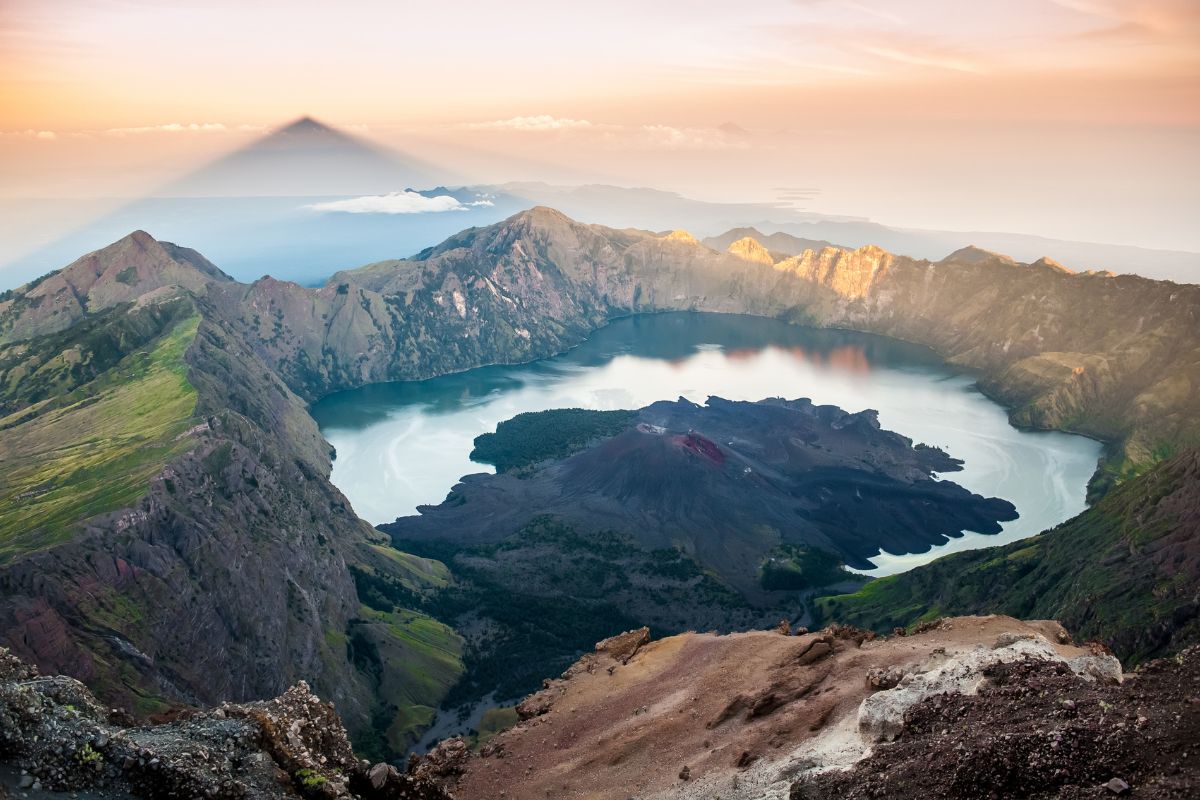
Majestic Mount Rinjani in Lombok, Indonesia
Towering over the island of Lombok, Mount Rinjani is a captivating and awe-inspiring natural wonder that has long drawn adventurous travelers to its slopes. Standing at an impressive height of 3,726 meters (12,224 feet), this active volcano is not only the second-highest mountain in Indonesia but also a prominent feature of the Rinjani National Park, a protected area renowned for its diverse ecosystems and stunning landscapes.
The trek to the summit of Mount Rinjani is a challenging but immensely rewarding experience, offering hikers the chance to witness the mountain's breathtaking natural beauty up close. The ascent takes trekkers through a variety of landscapes, from lush, verdant forests to rugged, volcanic terrain, culminating in the dramatic caldera and crater lake that are the iconic features of this majestic peak.
At the summit, hikers are treated to a truly unforgettable panoramic view, with the serene Segara Anak crater lake nestled at the heart of the caldera. This turquoise-hued body of water, which is fed by hot springs and surrounded by the towering walls of the caldera, is a sight to behold and a testament to the dynamic geological forces that have shaped Mount Rinjani over centuries.
Beyond the captivating natural beauty, Mount Rinjani also holds deep cultural significance for the local Sasak people, who consider the mountain a sacred site. Visitors may encounter traditional Balinese Hindu and Sasak rituals and ceremonies taking place at various points along the hiking trails, offering a unique glimpse into the island's rich cultural heritage.
The Rinjani National Park, which surrounds the iconic volcano, is also home to a diverse array of flora and fauna, including endemic species found nowhere else on Earth. Trekkers may have the opportunity to spot rare birds, primates, and other wildlife during their ascent, further enhancing the sense of adventure and exploration.
Hiking Mount Rinjani is a challenging endeavor, requiring a good level of physical fitness and proper preparation. However, for those willing to take on the challenge, the rewards are immense – from the stunning vistas and natural wonders to the sense of personal accomplishment and connection with the natural world.
Whether you're an avid hiker, a nature enthusiast, or simply someone in search of a truly transformative and awe-inspiring experience, a journey to the summit of Mount Rinjani in Lombok is a must-do adventure that will leave a lasting impression on all who undertake it.
13. Exploring the Majestic Borobudur Temple Complex in Central Java, Indonesia
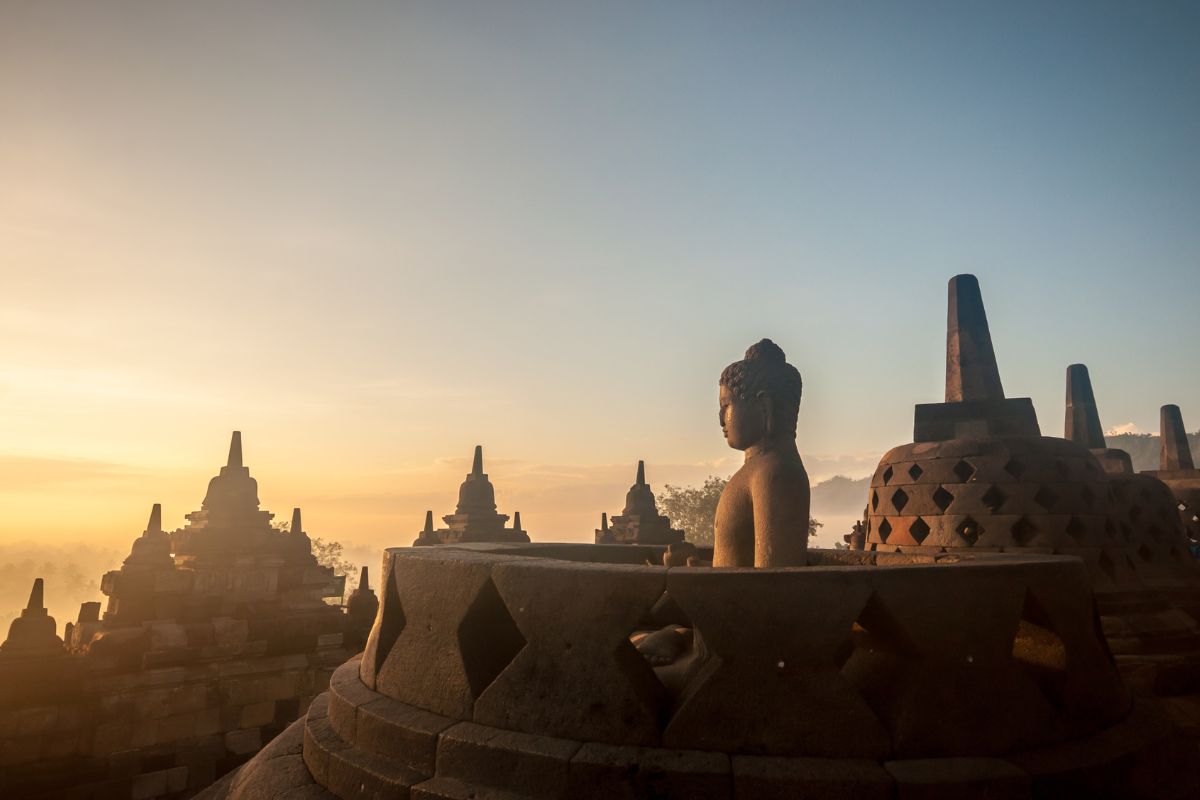
Majestic Borobudur Temple Complex in Central Java, Indonesia
Towering majestically in the heart of Central Java, the Borobudur Temple Complex is a true marvel of human ingenuity and a testament to the rich cultural heritage of Indonesia. As the largest Buddhist temple in the world, Borobudur stands as an awe-inspiring monument to the region's deep-rooted spiritual and architectural traditions.
Constructed in the 9th century, Borobudur is a colossal pyramid-like structure, rising over 42 meters (138 feet) tall and spanning an area of over 2 hectares (5 acres). The temple is composed of nine stacked platforms, each representing a different stage of the Buddhist cosmological universe, with the uppermost platform symbolizing the state of enlightenment.
As visitors ascend the temple's intricate series of terraces and staircases, they are treated to a breathtaking display of over 2,672 relief panels and 72 stupas, each adorned with intricate carvings and sculptures depicting scenes from Buddhist teachings and the daily life of the ancient Javanese civilization. The level of detail and craftsmanship on display is simply astounding, making Borobudur a true masterpiece of cultural and artistic expression.
Beyond its architectural grandeur, Borobudur is also a site of great spiritual significance. The temple's design and layout are closely aligned with the principles of Buddhist cosmology, with each level and platform representing a different stage of the journey towards enlightenment. Visitors can engage in meditation and contemplation within the temple's serene and peaceful atmosphere, immersing themselves in the profound spiritual essence of this iconic landmark.
The Borobudur Temple Complex is not only a UNESCO World Heritage Site but also a hub of cultural exchange and exploration. Visitors can delve into the rich history of the region, learning about the influence of Hinduism and Buddhism on the local Javanese culture, as well as the temple's remarkable restoration efforts following its rediscovery in the early 19th century.
Surrounding the temple, visitors can also discover a wealth of natural beauty, with the lush, verdant landscapes of Central Java providing a stunning backdrop to the architectural wonder of Borobudur. The nearby Mendut and Pawon temples, as well as the scenic vistas of the Kedu Plain and the majestic Mount Merapi volcano, all contribute to the captivating and immersive experience of exploring this remarkable region.
Whether you're a history buff, a cultural enthusiast, or simply someone in awe of the incredible achievements of the human spirit, a visit to the Borobudur Temple Complex in Central Java is a must-do experience that will leave a lasting impression on all who witness its grandeur and splendor.
14. Unveiling the Wonders of Komodo National Park: Home to the Legendary Komodo Dragons
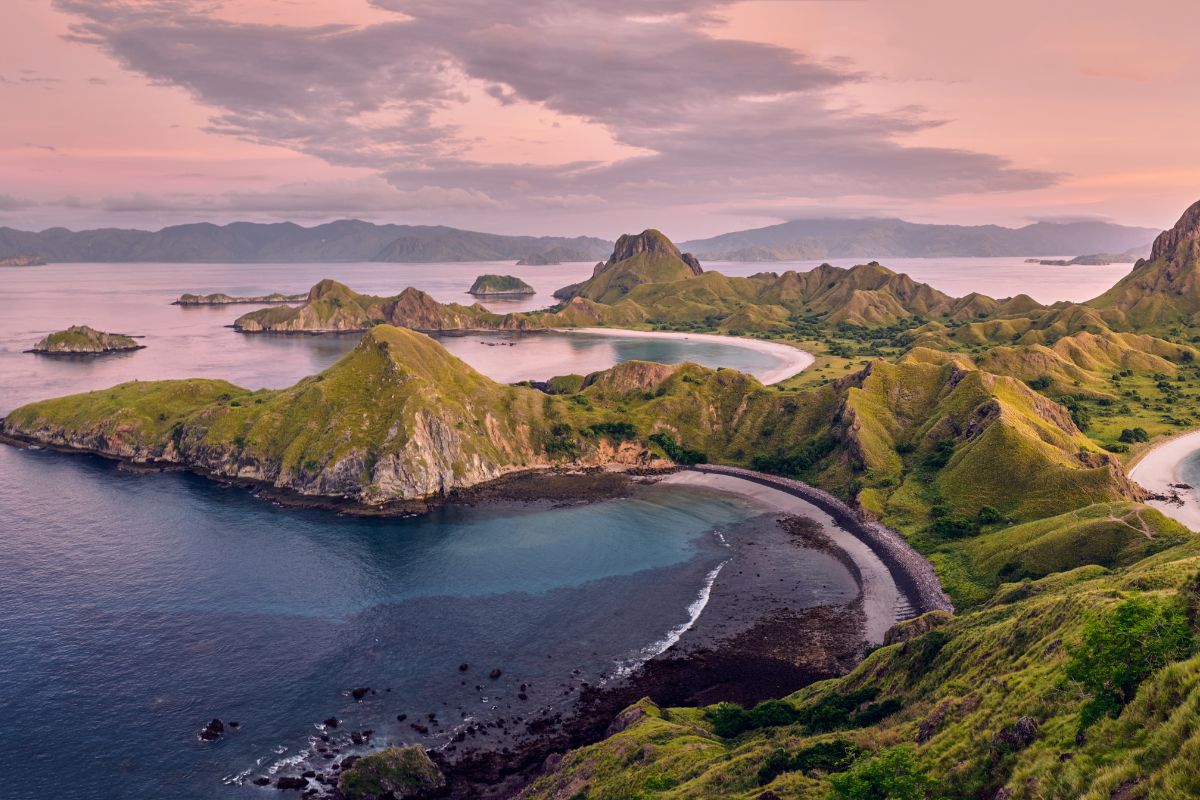
Komodo National Park - Home to the Legendary Komodo Dragons
Nestled amidst the stunning islands of eastern Indonesia, Komodo National Park is a true gem of natural wonder and biodiversity. Established in 1980, this protected area is renowned for its exceptional flora and fauna, most notably the iconic Komodo dragon, the world's largest living lizard species.
The Komodo National Park encompasses three main islands – Komodo, Rinca, and Padar – as well as numerous smaller islets, all of which are home to the magnificent Komodo dragons. These prehistoric-looking creatures, which can grow up to 3 meters (10 feet) in length and weigh over 70 kilograms (150 pounds), are the park's main draw, captivating visitors with their sheer size, power, and unique evolutionary adaptations.
Visitors to Komodo National Park have the opportunity to embark on guided treks through the rugged, volcanic landscapes, where they can catch a glimpse of the Komodo dragons in their natural habitat. These excursions not only offer the chance to observe these magnificent creatures up close but also provide insights into the park's diverse ecosystem, which includes a wide range of other fascinating species, such as wild horses, water buffalo, deer, and over 1,000 different plant varieties.
Beyond the land-based attractions, Komodo National Park is also renowned for its exceptional underwater world. The park's crystal-clear waters are home to an incredible array of marine life, including manta rays, sea turtles, dugongs, and thousands of tropical fish species. Snorkeling and scuba diving enthusiasts can immerse themselves in this underwater paradise, exploring vibrant coral reefs and marveling at the park's rich biodiversity.
The unique geological features of Komodo National Park, including its volcanic landscapes, rugged cliffs, and serene beaches, also contribute to the park's captivating allure. Visitors can hike to scenic viewpoints, relax on pristine white-sand beaches, and witness the stunning sunrises and sunsets that paint the sky in vibrant hues.
Komodo National Park is not only a natural wonder but also a UNESCO World Heritage Site, recognized for its exceptional universal value and the importance of its conservation efforts. The park's management, in collaboration with local communities and international organizations, works tirelessly to protect the Komodo dragons and their fragile habitat, ensuring the long-term sustainability of this unique and irreplaceable ecosystem.
Whether you're a nature enthusiast, an adventure seeker, or simply someone in search of an unforgettable and awe-inspiring experience, a visit to Komodo National Park is an absolute must. Prepare to be captivated by the legendary Komodo dragons, the park's stunning natural beauty, and the incredible diversity of life that thrives within this remarkable corner of Indonesia.
15. Exploring the Enchanting Rice Terraces of Ubud, Bali
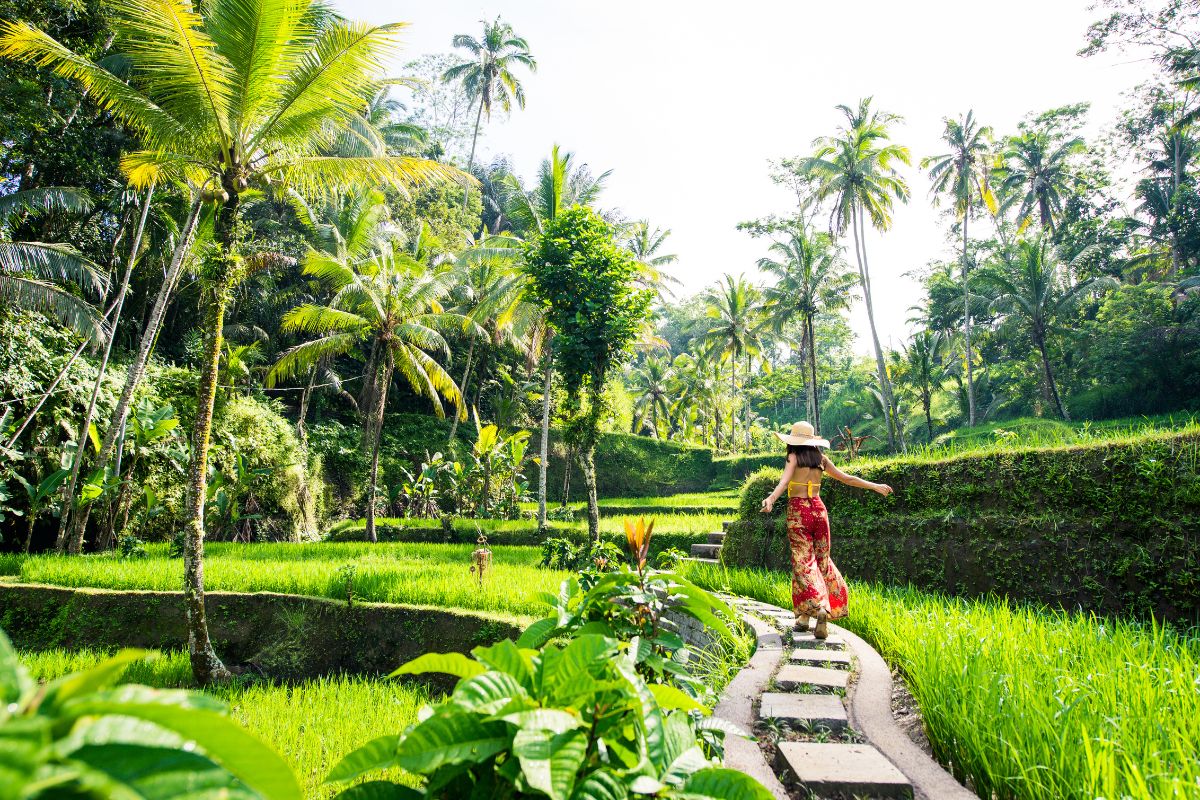
Rice Terraces of Ubud, Bali
Nestled amidst the lush, verdant hills of central Bali, the rice terraces of Ubud are a true wonder of nature and human ingenuity. These stunning, cascading fields of verdant green have become an iconic symbol of the island's rich agricultural heritage, drawing visitors from around the world to marvel at their breathtaking beauty.
The Ubud rice terraces, often referred to as the "Tegalalang Rice Terraces," are a prime example of Bali's traditional subak system, a centuries-old method of sustainable irrigation and water management. This intricate network of canals, aqueducts, and terraced fields has been carefully cultivated and maintained by the local Balinese communities, ensuring the efficient and equitable distribution of the island's precious water resources.
As visitors stroll along the narrow pathways that wind through the terraces, they are treated to a mesmerizing sight: layer upon layer of lush, emerald-green rice paddies, each one carefully sculpted into a gentle slope and interlocked with its neighbors to create a truly mesmerizing, undulating landscape. The terraces' unique design not only maximizes the available land and water resources but also creates a visually stunning and harmonious relationship between the natural and the cultivated.
Beyond their aesthetic appeal, the Ubud rice terraces are also deeply rooted in the cultural and spiritual traditions of the Balinese people. The subak system is not just a practical means of agricultural production but also a reflection of the island's Hindu-Buddhist beliefs, with the intricate network of canals and water temples serving as a symbolic representation of the balance and interconnectedness between human and divine, nature and culture.
Visitors to the Ubud rice terraces can immerse themselves in this rich cultural heritage, observing the traditional farming practices of the local communities, participating in rice-planting and harvesting ceremonies, and learning about the significance of the subak system in Balinese society. The terraces also provide a picturesque backdrop for photography, with the lush, verdant fields and the distant, hazy hills creating a truly breathtaking and serene setting.
Whether you're a nature lover, a cultural enthusiast, or simply someone in search of a peaceful and rejuvenating experience, a visit to the rice terraces of Ubud is a must-do activity on any Bali itinerary. These stunning, cascading fields of green serve as a testament to the enduring legacy of Balinese agriculture and the deep reverence for the natural world that is so integral to the island's cultural identity.
16. Discovering the Underwater Wonders of Bunaken National Marine Park, Indonesia
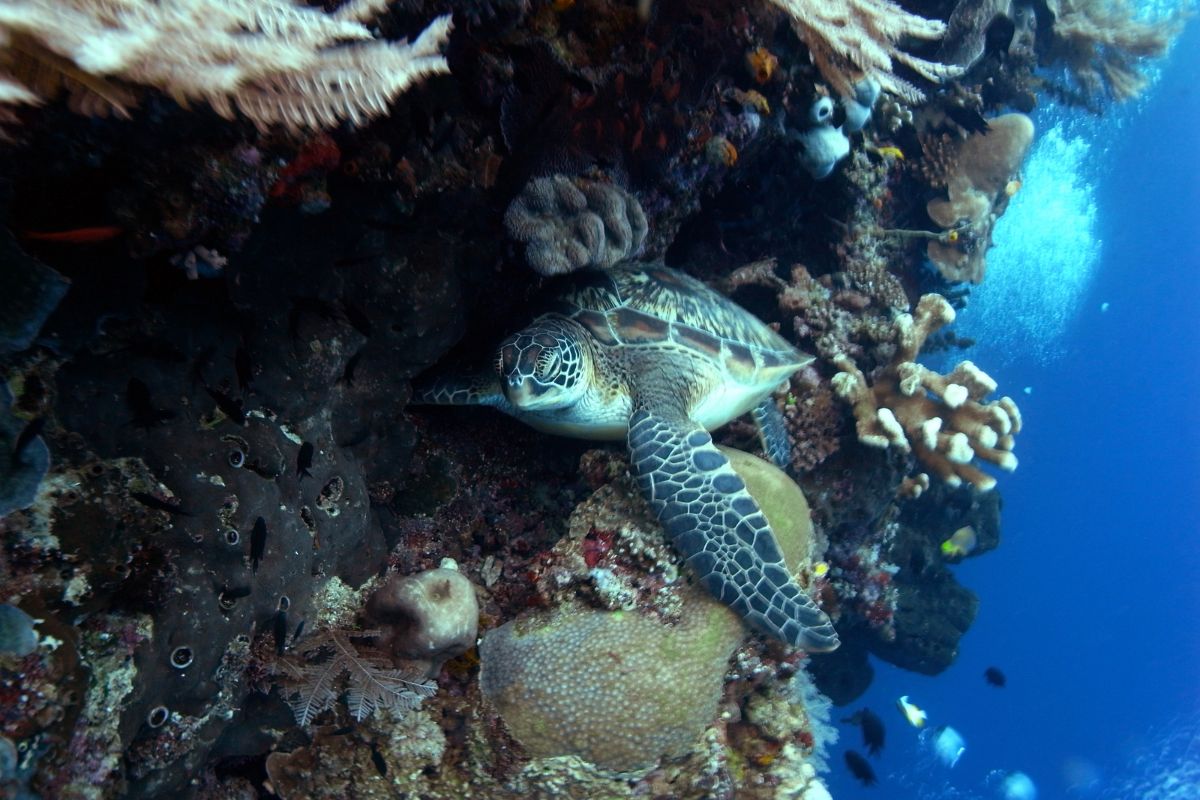
Bunaken National Marine Park, Indonesia
Nestled in the heart of the Coral Triangle, the Bunaken National Marine Park is a breathtaking and biodiverse underwater paradise that has long captivated the imagination of scuba divers and snorkelers from around the world. Encompassing the islands of Bunaken, Manado Tua, Siladen, Montehage, and Nain, this protected marine area is renowned for its stunning coral reefs, diverse marine life, and crystal-clear waters.
Established in 1991, Bunaken National Marine Park is home to an astounding array of marine species, boasting over 300 different types of hard and soft corals, as well as an estimated 3,000 species of fish. The park's strategic location within the Coral Triangle, often referred to as the "Amazon of the Seas," has made it a hub of unparalleled biodiversity, with many of the world's most vibrant and well-preserved coral reef ecosystems found within its waters.
For visitors, the opportunity to explore the underwater wonders of Bunaken is a truly awe-inspiring experience. From the dramatic, plunging walls of the Bunaken island's fringing reefs to the sprawling, shallow coral gardens of the Siladen and Montehage islands, each dive site offers a unique and mesmerizing glimpse into the rich tapestry of marine life that thrives beneath the surface.
Divers and snorkelers can expect to encounter a vast array of iconic tropical marine species, including schools of barracuda, manta rays, sea turtles, and the elusive dugong. The park's crystal-clear waters, with visibility often exceeding 30 meters, provide the perfect conditions for observing the vibrant and diverse marine ecosystems that have earned Bunaken a reputation as one of the world's premier dive destinations.
Beyond the underwater attractions, the Bunaken National Marine Park also offers a wealth of opportunities for land-based exploration and cultural immersion. Visitors can hike through the lush, forested interior of the islands, spotting endemic bird species and learning about the traditional way of life of the local Bajo and Sangir communities.
The park's commitment to sustainable tourism and environmental conservation also adds to its appeal, with visitors able to engage with local eco-tourism initiatives and support the ongoing efforts to protect the fragile marine habitats. From participating in reef clean-ups to learning about the importance of sustainable fishing practices, a visit to Bunaken can be a truly transformative and meaningful experience.
Whether you're an experienced diver or a curious snorkeler, a visit to Bunaken National Marine Park promises an unforgettable encounter with the breathtaking wonders of the underwater world. With its stunning coral reefs, abundant marine life, and rich cultural heritage, this unique and protected area of Indonesia is a true gem that should not be missed on any journey through the archipelago.
17. Exploring the Volcanic Wonders of Tangkuban Perahu, West Java, Indonesia
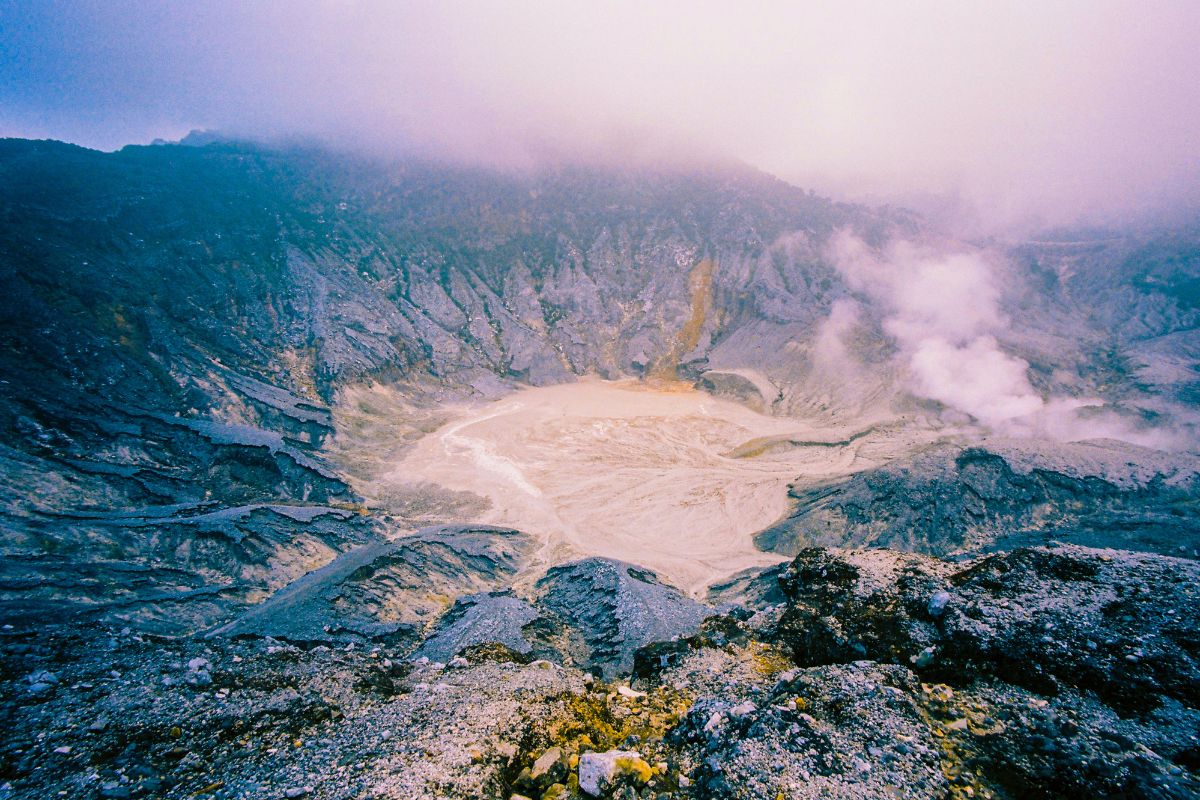
Tangkuban Perahu, West Java, Indonesia
Nestled within the lush, verdant landscapes of West Java, Tangkuban Perahu is a captivating volcanic site that has long captured the imagination of travelers and adventurers alike. The name "Tangkuban Perahu" translates to "overturned boat," a reference to the unique geological formation of the volcano's crater, which resembles an upside-down boat.
Tangkuban Perahu is an active volcano, standing at an impressive height of 2,084 meters (6,837 feet) above sea level. The volcano's most recent eruption occurred in 1969, but it remains an active and closely monitored geological feature, attracting visitors from around the world who come to marvel at its impressive size and unique landscape.
One of the primary draws of Tangkuban Perahu is the opportunity to hike to the volcano's crater rim, where visitors can peer down into the steaming, sulfurous cauldron of the caldera. The hike to the crater's edge is a relatively easy and well-marked trail, offering stunning views of the surrounding landscape and the opportunity to observe the volcanic activity up close.
In addition to the main crater, Tangkuban Perahu is also home to several other fascinating geological features, including the Damar Kurung crater, the Domas crater, and the Upas crater, each with its own unique characteristics and volcanic activity. Visitors can explore these diverse craters, taking in the sight of bubbling mud pools, fumaroles, and other volcanic phenomena.
Beyond the volcanic landscapes, Tangkuban Perahu is also renowned for its rich cultural heritage and the intricate legends and folklore that surround the mountain. According to local mythology, the volcano is the site of a tragic love story, where a princess was forced to marry her own son, leading to the creation of the distinctive "overturned boat" shape of the crater.
Visitors to Tangkuban Perahu can immerse themselves in this rich cultural heritage, visiting the nearby Ciater Hot Springs, which are believed to have healing properties, or exploring the traditional Sundanese villages that dot the surrounding countryside.
Whether you're a geology enthusiast, a nature lover, or simply someone in search of a unique and awe-inspiring experience, a visit to Tangkuban Perahu is a must-do activity on any West Java itinerary. With its towering volcanic landscapes, rich cultural heritage, and stunning natural beauty, this captivating site offers a truly unforgettable glimpse into the dynamic geological forces that have shaped the landscapes of Indonesia.
18. Krakatau Volcano: A Legendary Geological Phenomenon in Indonesia
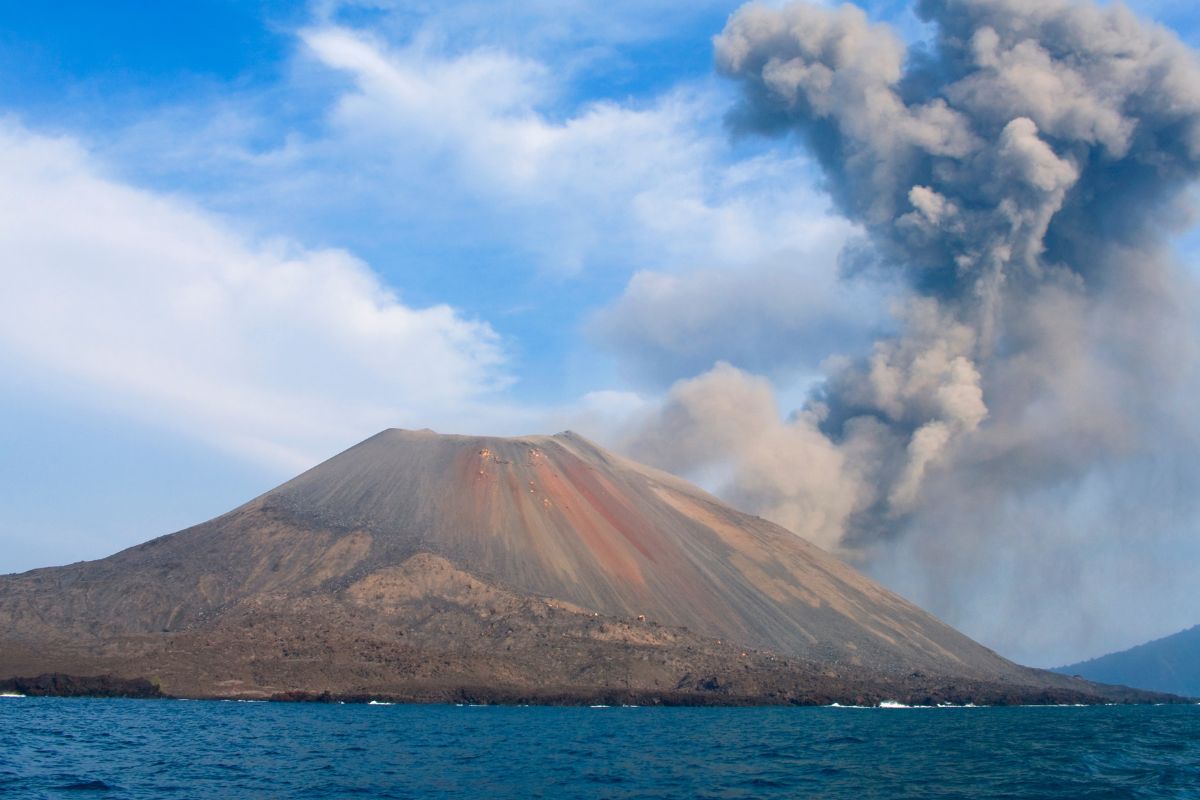
Krakatau Volcano - A Legendary Geological Phenomenon in Indonesia
Krakatau, or Krakatoa, is a legendary volcanic island located in the Sunda Strait between the Indonesian islands of Java and Sumatra. This infamous volcano has long captured the attention of the world, not only for its breathtaking natural beauty but also for its catastrophic and world-changing eruptions throughout history.
The Krakatau volcano system is composed of several islands, including the main island of Rakata, as well as the smaller islands of Verlaten, Sertung, and Rakata Kecil. The volcano's history is marked by a series of massive and violent eruptions, the most famous of which occurred in 1883, when a series of four explosions devastated the region and had far-reaching global consequences.
The 1883 Krakatau eruption was one of the most deadly and destructive volcanic events in recorded history. The explosions were heard thousands of kilometers away, and the resulting tsunamis reached heights of up to 120 feet (36 meters), causing widespread destruction and loss of life along the coasts of Java and Sumatra. The eruption also had a significant impact on global climate, with the massive release of volcanic ash and gases contributing to a worldwide temperature drop in the following years.
Today, Krakatau remains an active and closely monitored volcano, drawing visitors from around the world who come to witness its awe-inspiring geological features and dramatic landscape. The volcano's caldera, formed by the cataclysmic 1883 eruption, is a breathtaking sight, with its steep, rugged cliffs and turquoise-hued crater lake.
Visitors to Krakatau have the opportunity to hike to the volcano's crater rim, where they can peer down into the active vent and observe the ongoing volcanic activity. The island also offers opportunities for snorkeling and diving, with its surrounding waters teeming with diverse marine life, including schools of tropical fish, vibrant coral reefs, and the occasional sighting of the elusive manta ray.
Beyond the natural wonders of the volcano itself, Krakatau is also steeped in cultural and historical significance. The island has long been the subject of legends and folklore, with the indigenous Sundanese people of Java and Sumatra weaving intricate tales about the volcano's origins and its role in shaping the region's landscape and history.
Whether you're a geology enthusiast, a nature lover, or simply someone in search of a truly unique and awe-inspiring adventure, a visit to Krakatau is a must-do experience on any Indonesian itinerary. This legendary volcanic island offers a glimpse into the dynamic and powerful forces that have shaped the Earth's surface, and a chance to connect with the rich cultural heritage of the region.
19. Tana Toraja: Exploring the Unique Culture and Traditions of an Enigmatic Indonesian Highlands
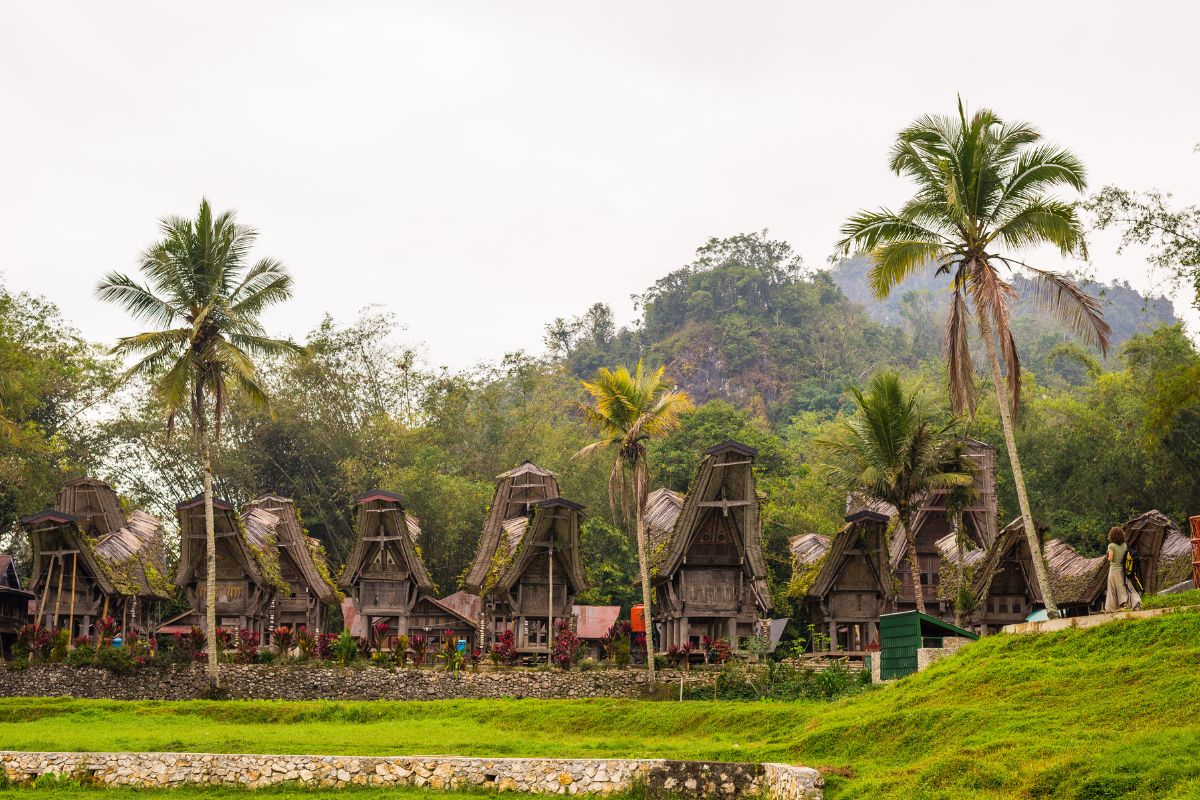
Tana Toraja
Nestled high in the rugged, mountainous regions of South Sulawesi, Tana Toraja is a captivating and enigmatic region that has long been renowned for its rich cultural heritage and distinctive traditions. Often referred to as the "Land of the Heavenly Kings," Tana Toraja is home to the Toraja people, an indigenous ethnic group whose way of life and beliefs have remained remarkably intact despite the march of modernization.
The Toraja people are known for their unique architectural style, with their iconic tongkonan houses featuring striking, boat-shaped roofs that are said to symbolize the journey of the soul to the afterlife. These traditional houses, along with the region's numerous, intricately carved stone graves and tau-tau statues, create a visually stunning and culturally significant landscape that has become a magnet for visitors from around the world.
One of the most celebrated aspects of Toraja culture is their elaborate funeral rituals, known as the "Rambu Solo'." These multi-day ceremonies are a testament to the Toraja's deep reverence for their ancestors and the afterlife, with the deceased being laid to rest in elaborate, ornately decorated coffins that are then placed in cliffside graves or carved stone sarcophagi.
The Rambu Solo' rituals are not only an opportunity to honor the dead but also a time for the Toraja community to come together, share stories, and reaffirm their cultural identity. Visitors to Tana Toraja can witness these captivating ceremonies, which often feature traditional music, dance, and the ritualistic slaughter of water buffalo, known as the "Ma'Nene" ritual.
Beyond the funeral rituals, Tana Toraja is also home to a rich tapestry of cultural traditions, from the intricate woodcarving and textile weaving techniques that are passed down through generations, to the vibrant annual festivals that celebrate the region's agricultural heritage and spiritual beliefs.
One of the most iconic of these festivals is the "To Maro," a three-day event that honors the Toraja's ancestral deities and features a unique, ritualized form of buffalo fighting. The festival is a testament to the enduring strength of Toraja culture, and a reminder of the deep-rooted connections between the people, the land, and the spiritual realm.
For visitors to Tana Toraja, the opportunity to immerse themselves in this captivating and enigmatic culture is a truly transformative experience. From exploring the region's stunning natural landscapes, to engaging with the Toraja people and learning about their unique traditions, a visit to Tana Toraja offers a glimpse into a world that is both ancient and profoundly modern, a testament to the enduring power of cultural resilience and the human spirit.
20. The Gili Islands: A Tropical Paradise in Indonesia
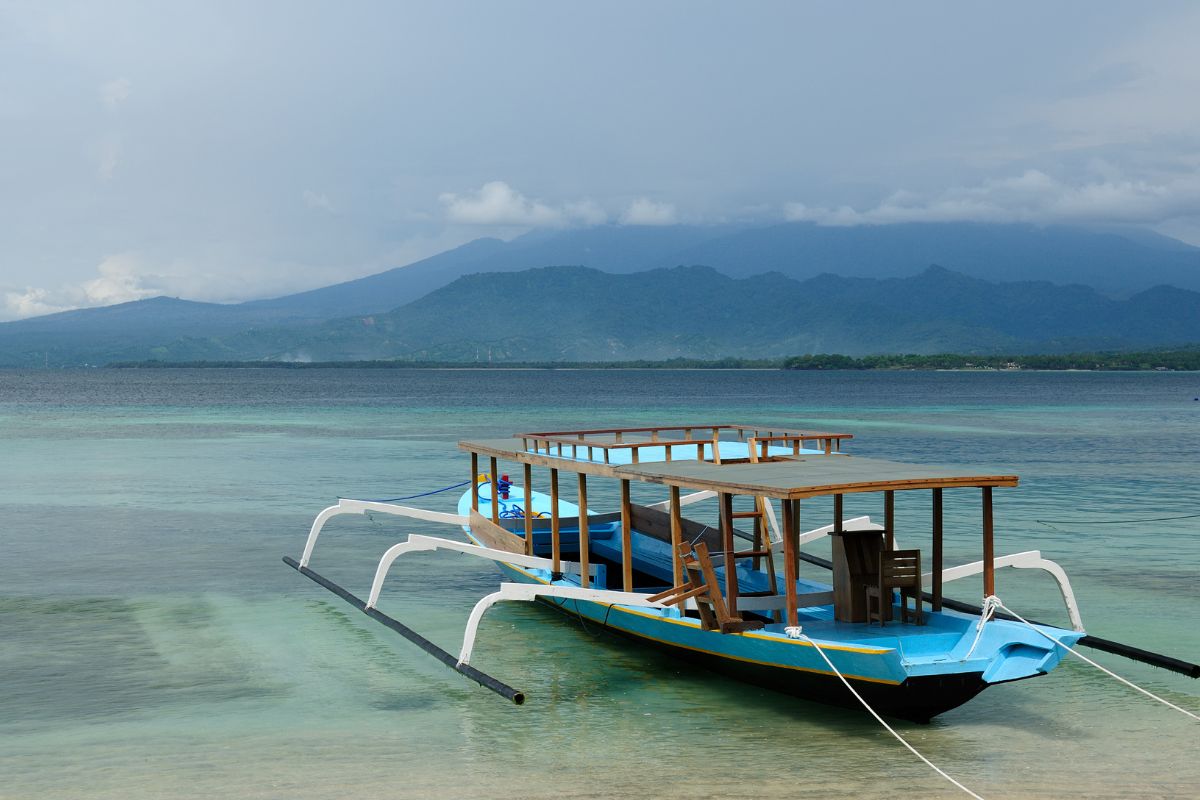
The Gili Islands A Tropical Paradise in Indonesia
The Gili Islands, a trio of small, idyllic islands off the northwest coast of Lombok in Indonesia, have long been a sought-after destination for travelers seeking a slice of tropical paradise. These three islands – Gili Trawangan, Gili Air, and Gili Meno – each offer their own unique charms and appeal, making the Gili Islands a versatile and captivating destination.
Gili Trawangan, often referred to as the "party island," is the largest and most developed of the three, catering to a lively and youthful crowd with its vibrant nightlife, diverse dining options, and array of water sports and activities. From snorkeling and scuba diving to yoga and meditation retreats, Gili Trawangan has something for everyone.
In contrast, Gili Air and Gili Meno offer a more serene and laid-back atmosphere, attracting visitors who seek a quieter and more tranquil island escape. Gili Air, the closest to Lombok, is known for its stunning beaches, vibrant coral reefs, and a relaxed, community-oriented vibe. Gili Meno, the smallest of the three, is renowned for its pristine natural beauty, with a focus on eco-tourism and a slower pace of life.
One of the most unique features of the Gili Islands is the absence of motorized vehicles. Instead, the islands are navigated primarily by horse-drawn carriages, bicycles, and on foot, creating a truly peaceful and car-free environment that allows visitors to fully immerse themselves in the island's natural charms.
The crystal-clear waters surrounding the Gili Islands are a major draw for underwater enthusiasts, with the region's diverse marine life and healthy coral reefs making it a prime destination for snorkeling and scuba diving. From the opportunity to spot majestic manta rays and sea turtles to the chance to explore vibrant underwater landscapes, the Gili Islands offer a truly unforgettable aquatic adventure.
Beyond the water-based activities, the Gili Islands also provide ample opportunity for land-based exploration, with hiking trails, yoga retreats, and the chance to engage with the local Sasak culture. Visitors can learn about traditional weaving techniques, witness local festivals and ceremonies, and gain a deeper appreciation for the rich cultural heritage of the region.
Whether you're seeking a lively and social island escape, a serene and tranquil retreat, or a perfect blend of both, the Gili Islands offer a truly unique and captivating Indonesian travel experience. From the stunning natural landscapes to the warm hospitality of the local people, a visit to this tropical paradise is sure to leave a lasting impression on all who set foot on its shores.
